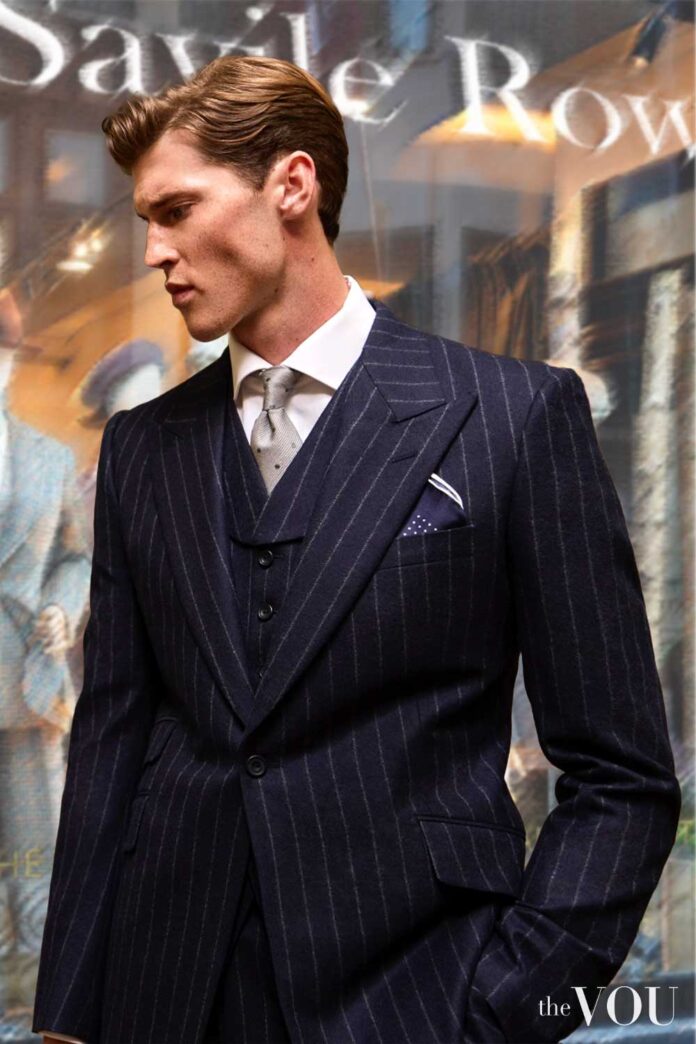Nestled in the heart of London’s Mayfair district, Savile Row stands as a bastion of sartorial excellence, where the art of bespoke tailoring has been honed to perfection over centuries.
This legendary street, spanning a mere 150 yards, has dressed royalty, statesmen, and discerning gentlemen for over two centuries, earning its moniker as the “Golden Mile of Tailoring“.
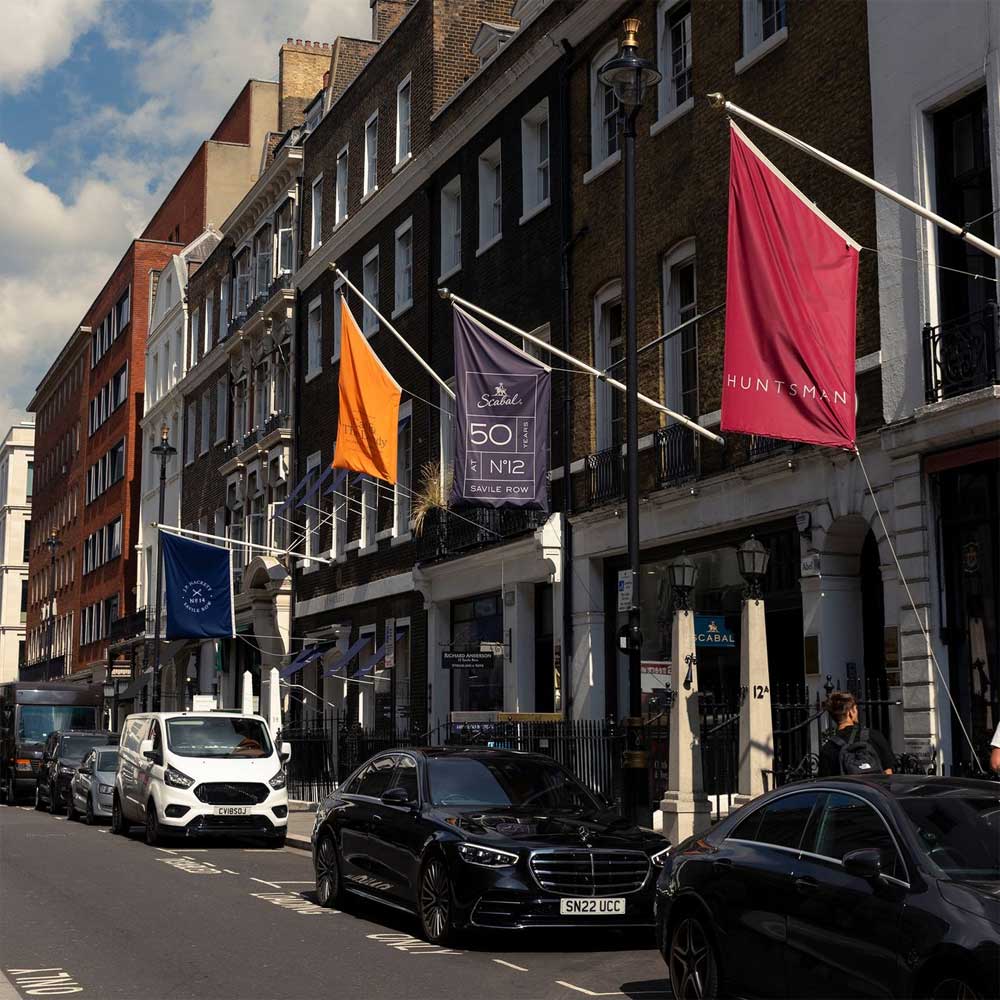
Savile Row tailoring represents the zenith of handcrafted garments, where each stitch tells a story of unparalleled craftsmanship and timeless British elegance.
The allure of Savile Row extends far beyond its geographical boundaries, influencing global fashion and setting the gold standard for bespoke suits.
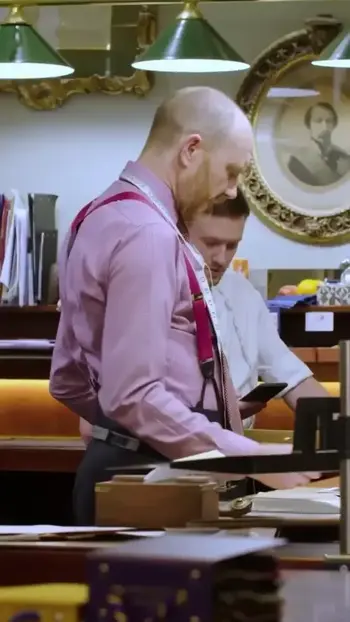
In Japan, the word for suit – ‘sebiro’ – is a linguistic homage to this illustrious street, underscoring its worldwide impact.
In this article, we’ll delve into the rich tapestry of Savile Row’s history, techniques, and enduring appeal, offering insights into why these handcrafted masterpieces continue to captivate sartorialists in an age of mass production.
Savile Row Lexicon Decoded
To truly appreciate the world of Savile Row tailoring, you must first understand its unique vernacular.
So, before we start, let’s unravel some of the most essential terms that form the backbone of this rarefied realm.
![]()
Cutter – The maestro of measurement and pattern-making, the cutter is responsible for creating the paper pattern and cutting the cloth. This role is so crucial that many Savile Row firms are known by their head cutters’ names.
Military Roll – A distinctive lapel shape with a gentle outward curve, originating from military tailoring and now a signature of some Row houses.
Savile Row Bespoke vs. Haute Couture and Similar Tailoring
| Term | Definition | Characteristics |
|---|---|---|
| Savile Row Bespoke | Fully handcrafted garments made on Savile Row to individual client specifications | Individual paper pattern, multiple fittings, hand-sewn details, full canvas construction |
| Haute Couture | High-end fashion constructed by hand from start to finish, made-to-order for private clients | Mostly womenswear, regulated by the Chambre Syndicale de la Haute Couture in Paris |
| Made-to-Measure | Garments cut and sewn from an existing pattern, adjusted to the client’s measurements | Some customisation, fewer fittings, often partially machine-made |
| Su Misura | Italian term for made-to-measure, often with a higher degree of handwork than typical MTM | A blend of ready-to-wear and bespoke garments, popular with Italian luxury brands |
| Ready-to-Wear | Mass-produced clothing made in standard sizes | No customisation, immediate availability, lower cost |
While the first four terms in the table above relate to tailored clothing, Savile Row bespoke stands apart in its dedication to handcraftsmanship, precision, and the personal relationship between tailor and client.
Each Savile Row suit is a unique creation, bearing the invisible signature of its makers and the imprint of centuries of tailoring tradition.
Savile Row’s Storied Legacy
| Era | Key Developments | Notable Figures |
|---|---|---|
| 1730s | Construction of Savile Row as part of Burlington Estate | Richard Boyle, 3rd Earl of Burlington |
| 1803 | The first tailoring store opens on Savile Row | James Hawkes |
| 1846 | Henry Poole & Co. is established as the ‘Founder of Savile Row’ | Henry Poole |
| 1860s | Savile Row becomes synonymous with bespoke tailoring | The Prince of Wales (future Edward VII) |
| 1920s-1930s | ‘Golden Age’ of Savile Row, catering to Hollywood stars | Fred Astaire, Cary Grant |
| 1960s | Modernisation of Savile Row with the arrival of ‘New Wave’ tailors | Tommy Nutter, Edward Sexton |
| 2004 | Formation of Savile Row Bespoke Association | Mark Henderson |
The genesis of Savile Row as the world’s preeminent tailoring destination is a tale woven through the fabric of British history.
Named after Lady Dorothy Savile, wife of the 3rd Earl of Burlington, the street was initially part of a prestigious residential development in the 1730s.
However, its transformation into the epicentre of bespoke tailoring began in the early 19th century.
A military tailor, James Hawkes was among the first to establish his business on Savile Row in 1803, marking the beginning of the street’s association with fine tailoring, particularly for military uniforms.
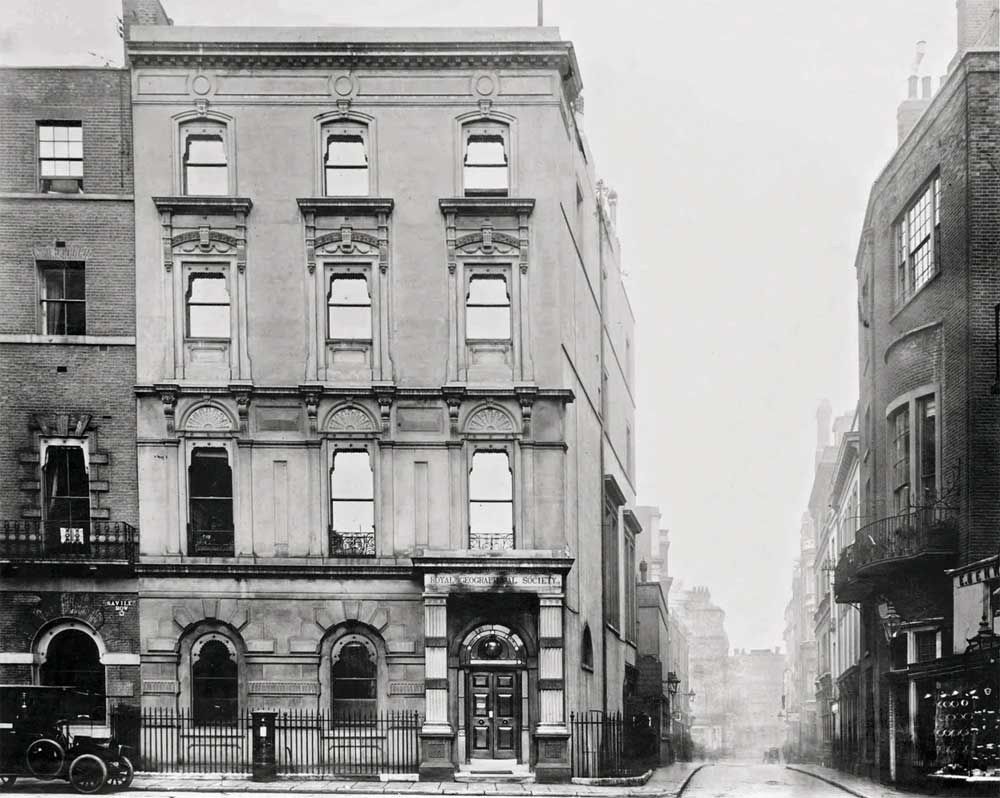
However, the true catalyst for Savile Row’s rise to prominence came in 1846 with the arrival of Henry Poole & Co., often regarded as the ‘Founder of Savile Row’.
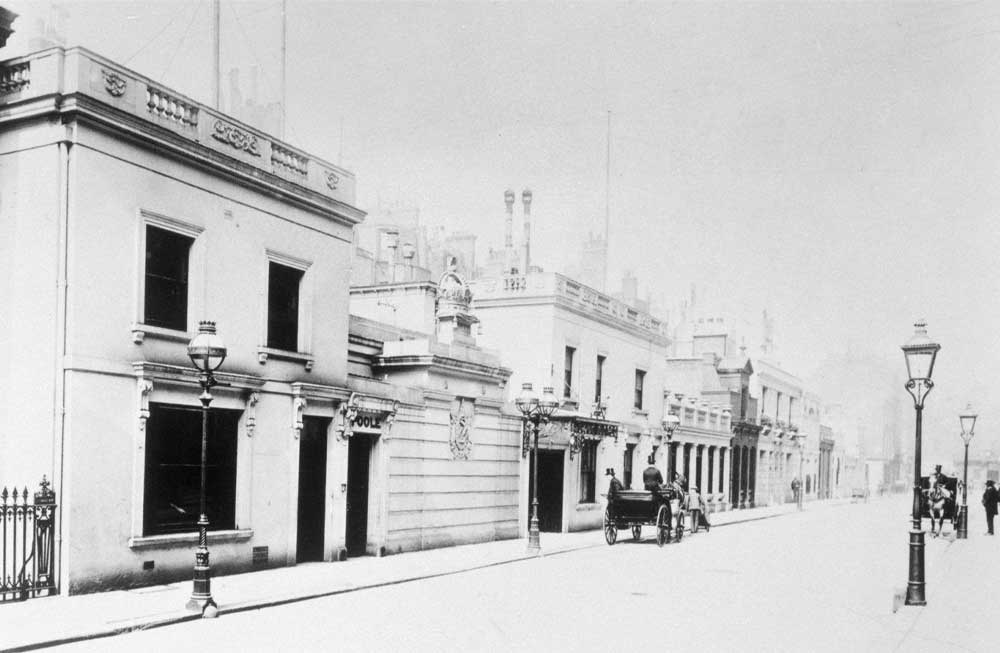
Henry Poole’s innovative spirit and royal connections propelled Savile Row into the limelight.
In 1860, he created a short smoking jacket for the Prince of Wales (later Edward VII), inadvertently inventing the dinner jacket or tuxedo, a garment that would revolutionise formal menswear globally.
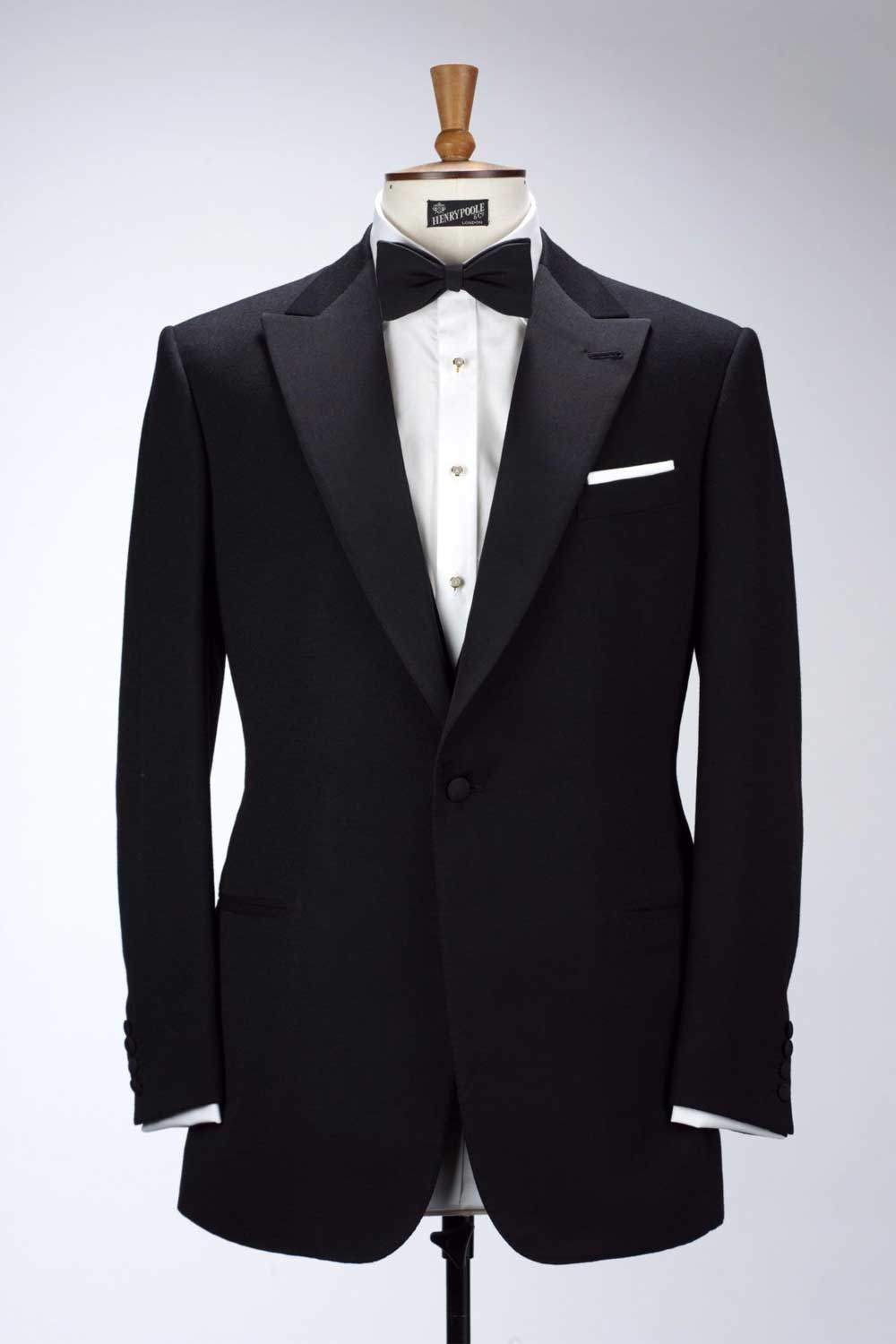
Savile Row Golden Age
The interwar period of the 1920s and 1930s is often referred to as Savile Row’s ‘Golden Age’.
During this time, the street’s reputation for unparalleled craftsmanship attracted a glittering clientele of aristocrats, politicians, and Hollywood stars.
Legendary figures such as Fred Astaire and Cary Grant became devoted patrons, further cementing Savile Row’s status as the pinnacle of men’s tailoring.
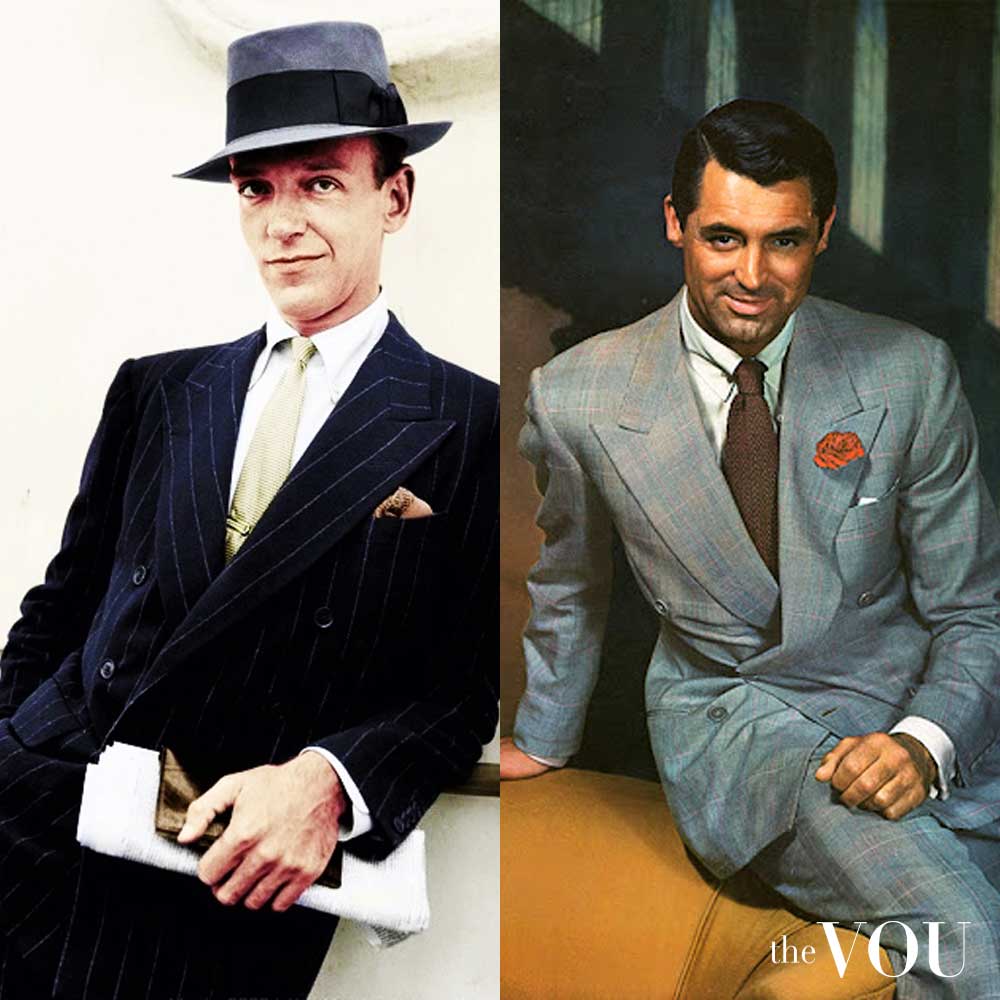
An oft-overlooked aspect of Savile Row’s history is its contribution to wartime efforts.
During both World Wars, many tailoring houses redirected their skills to produce military uniforms, demonstrating the adaptability and patriotism of these establishments.
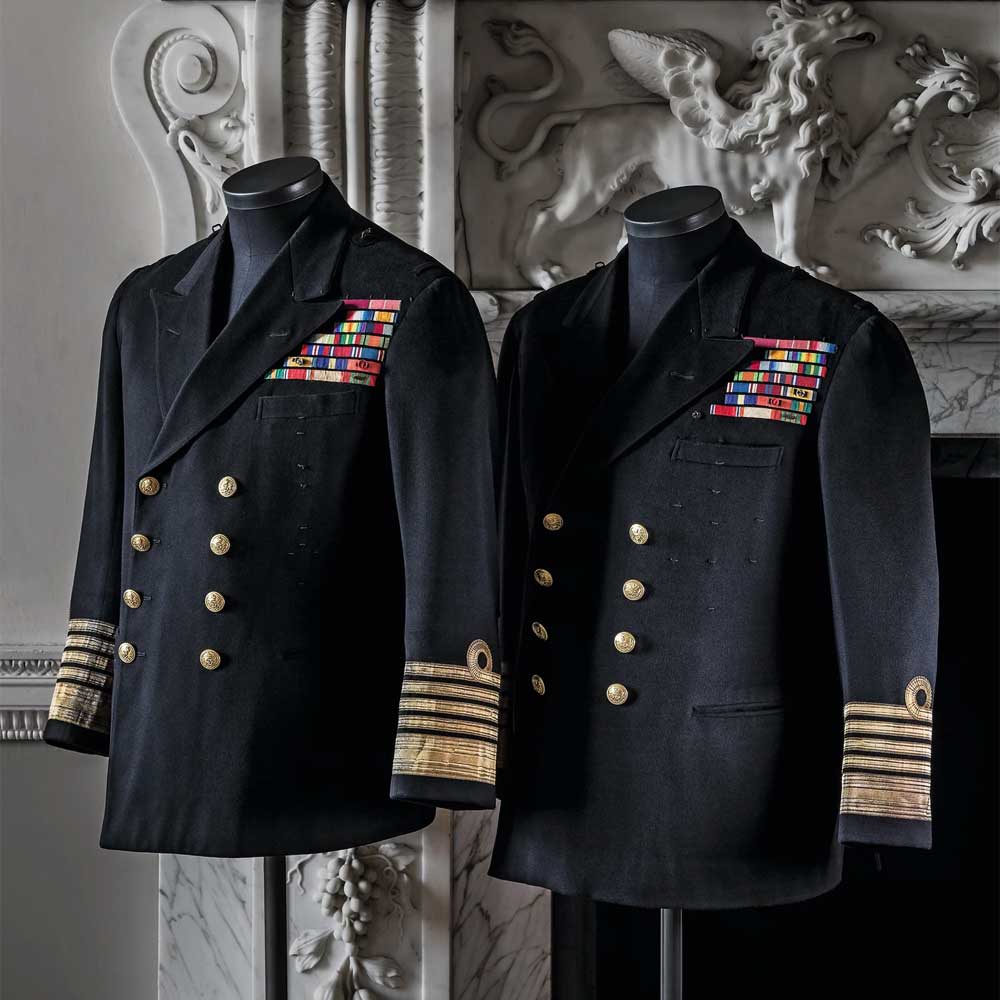
The 1960s ushered in a period of modernisation for Savile Row. The arrival of ‘New Wave’ tailors like Tommy Nutter and Edward Sexton brought a fresh perspective to the street.
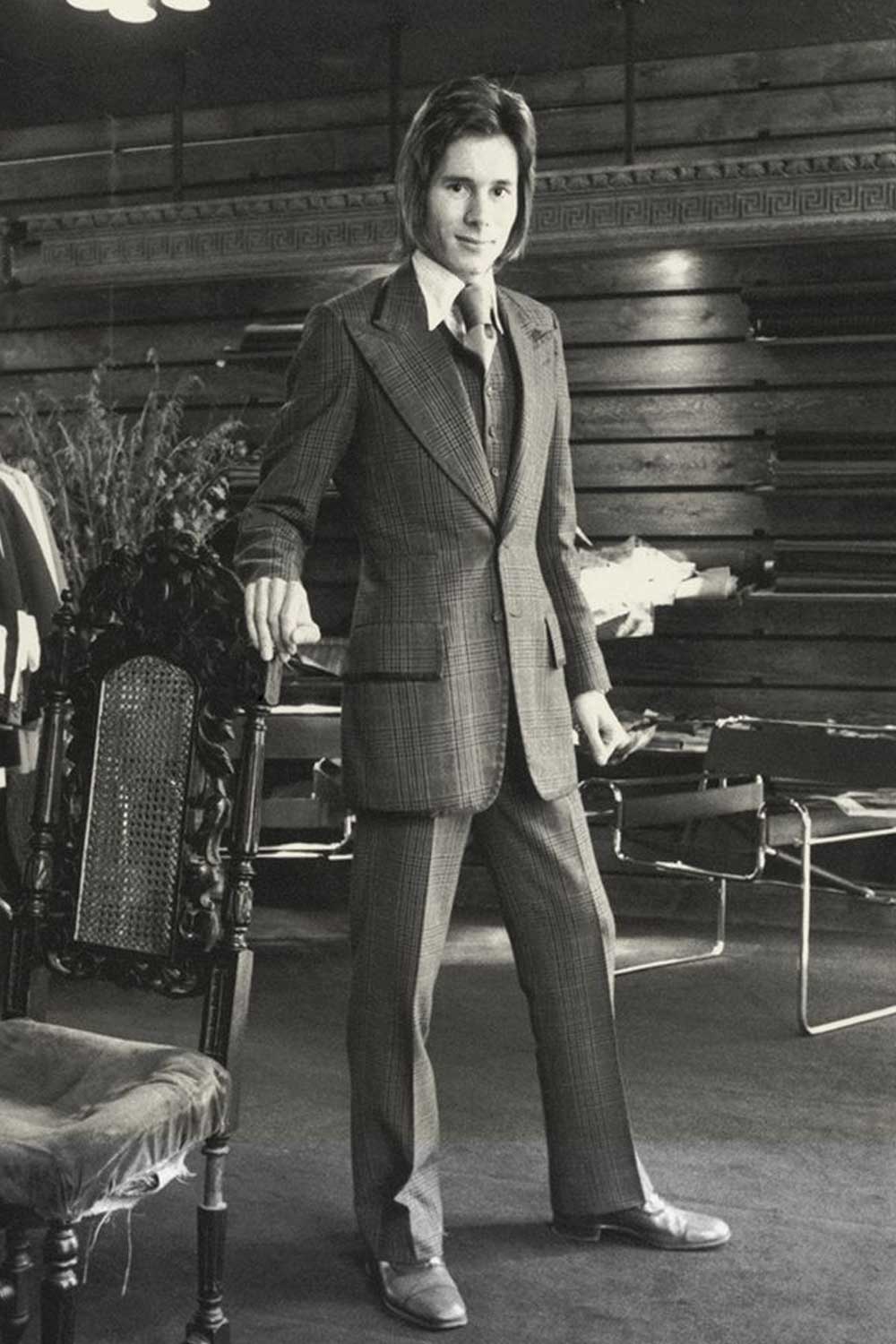
Nutter, in particular, revolutionised Savile Row with his bold designs, dressing icons of the era, including The Beatles and Mick Jagger.
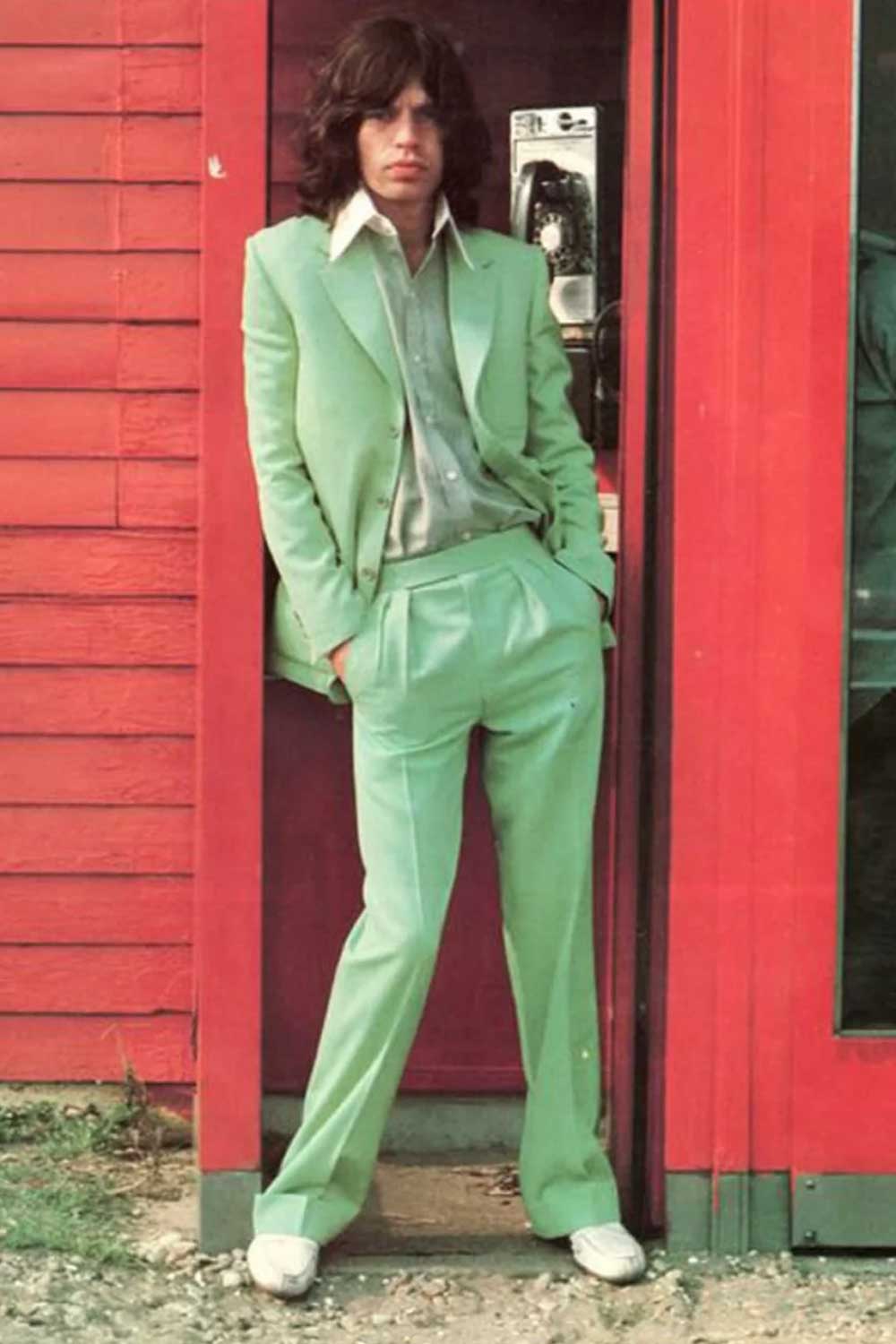
This injection of contemporary flair helped Savile Row maintain its relevance in a rapidly changing fashion landscape.
Savile Row in the Modern Era
As the 21st century dawned, Savile Row faced new challenges from globalisation and changing consumer habits.
In response, the Savile Row Bespoke Association was formed in 2004 to protect and promote the art of bespoke tailoring.
This organisation established a strict code of practice, ensuring that garments labelled as ‘Savile Row Bespoke’ meet the highest standards of craftsmanship.
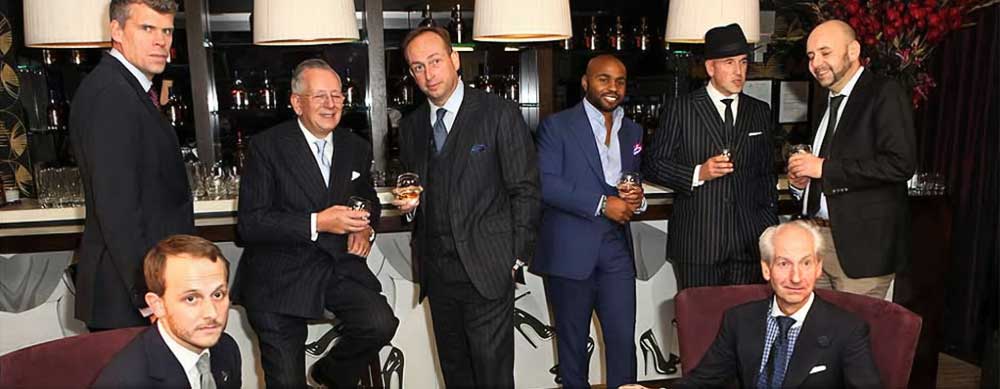
An intriguing development in recent years has been the quiet renaissance of British cloth mills.
After decades of decline, there’s been a resurgence of interest in locally-produced fabrics.
Savile Row tailors have been at the forefront of this movement, collaborating with historic mills in Yorkshire and Scotland to create exclusive cloths, thus preserving another aspect of British tailoring heritage.
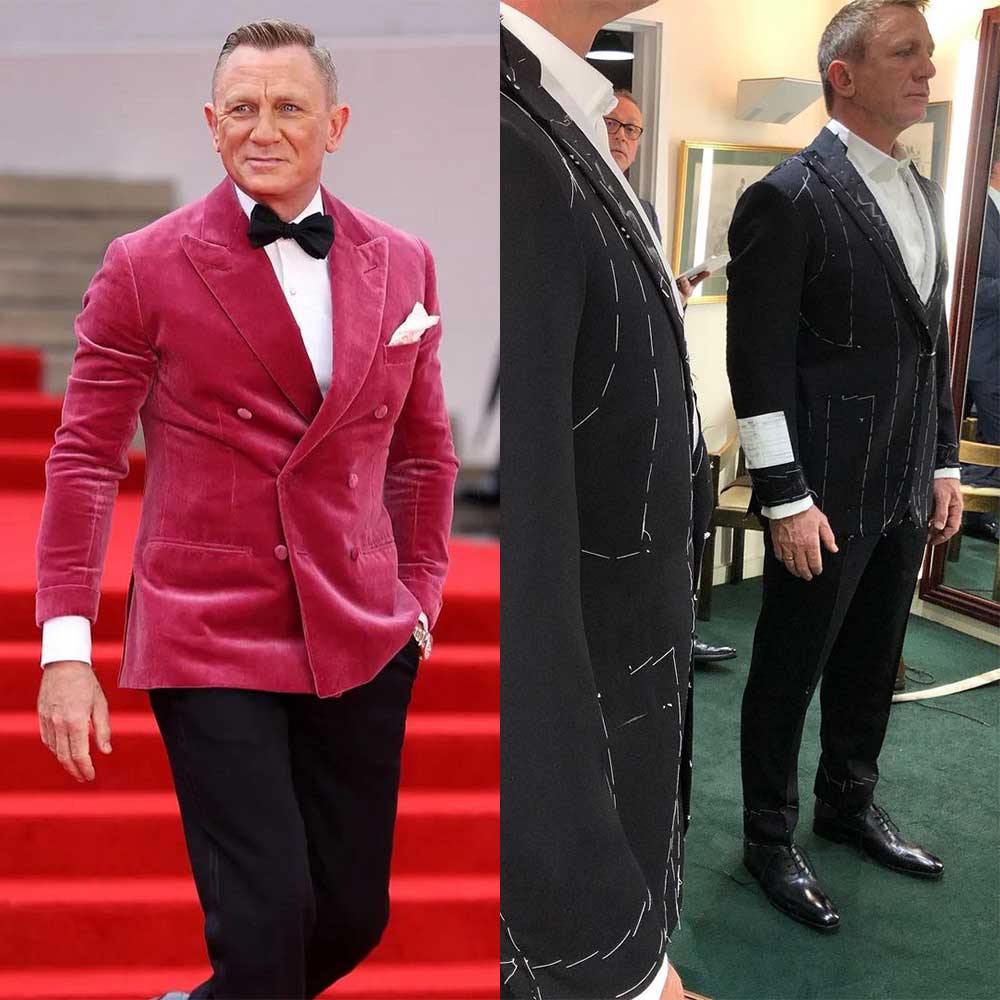
Nowadays, Savile Row continues to evolve while steadfastly maintaining its core values of exceptional quality and personal service.
The street now hosts a mix of centuries-old establishments and newer tailoring houses, each contributing to the rich tapestry of Savile Row’s legacy.
How Savile Row Bespoke Tailoring Works
| Stage | Process | Time |
|---|---|---|
| Initial Consultation | Discussion about your requirements: style, silhouette, colours, fabric selection, etc | 1-2 hours |
| Measurements and Pattern Creation | Extensive measurements are taken, and unique paper patterns are drafted | 2-3 hours |
| Cutting | Fabrics are cut by hand according to the patterns taken | 3-4 hours |
| Basting and First Fitting | Garments are roughly assembled, and the first fitting session is conducted | 1-2 weeks |
| Forward Fitting | Adjustments are made, and the second fitting session takes place | 1-2 weeks |
| Finishing and Final Fitting | Final adjustments, hand-finishing of details | 1-2 weeks |
| Total Process | From the first consultation to the final garment | 8-12 weeks |
The creation of a Savile Row bespoke suit is an intricate dance of precision, skill, and artistry that unfolds over several weeks.
This process, honed over centuries, transforms mere fabric into a second skin, perfectly attuned to the wearer’s body and style.
Let’s delve into the fascinating journey of a Savile Row bespoke suit.
Savile Row Initial Consultation – The Vision
The bespoke process begins with a thorough consultation lasting up to two hours.
During this time, the client (you) and the cutter discuss your style preferences, the garment’s intended use, and lifestyle in detail.
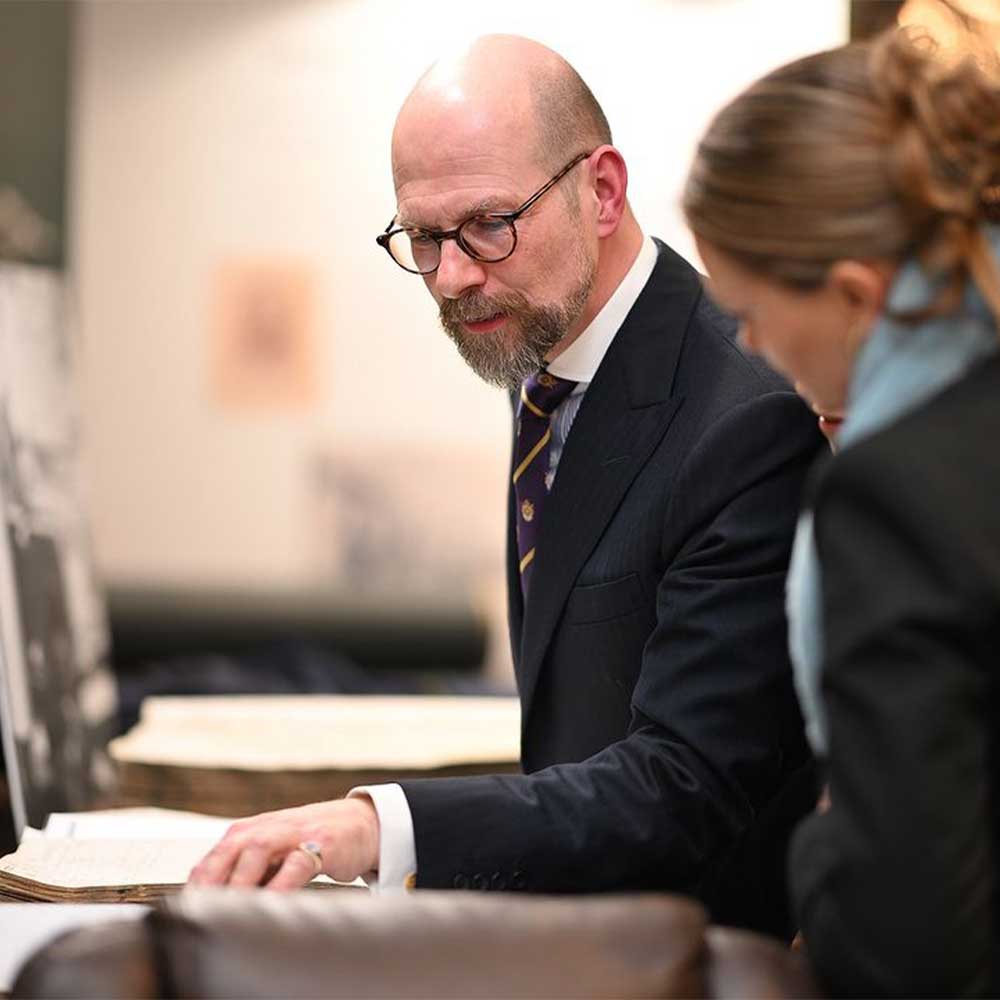
This is where the cutter’s role as a couture artist and psychologist comes into play; they must interpret your desires and translate them into a garment that fits perfectly while enhancing your presence.
A little-known aspect of this stage is the importance of posture analysis. Skilled cutters don’t just measure; they observe how you stand, walk, and gesticulate.
These observations inform subtle adjustments in the cut that accommodate your body shape and natural movements.
Measurements and Pattern Creation – Blueprint Perfection
Following the consultation, the cutter takes a series of precise measurements – usually between 20 and 30, though some cutters are known to take up to 50 measurements.
These go far beyond the basic chest, waist, and inseam measurements of off-the-rack suits.
Instead, they include details such as the slope of the shoulders, the arch of the back, and even the client’s posture.
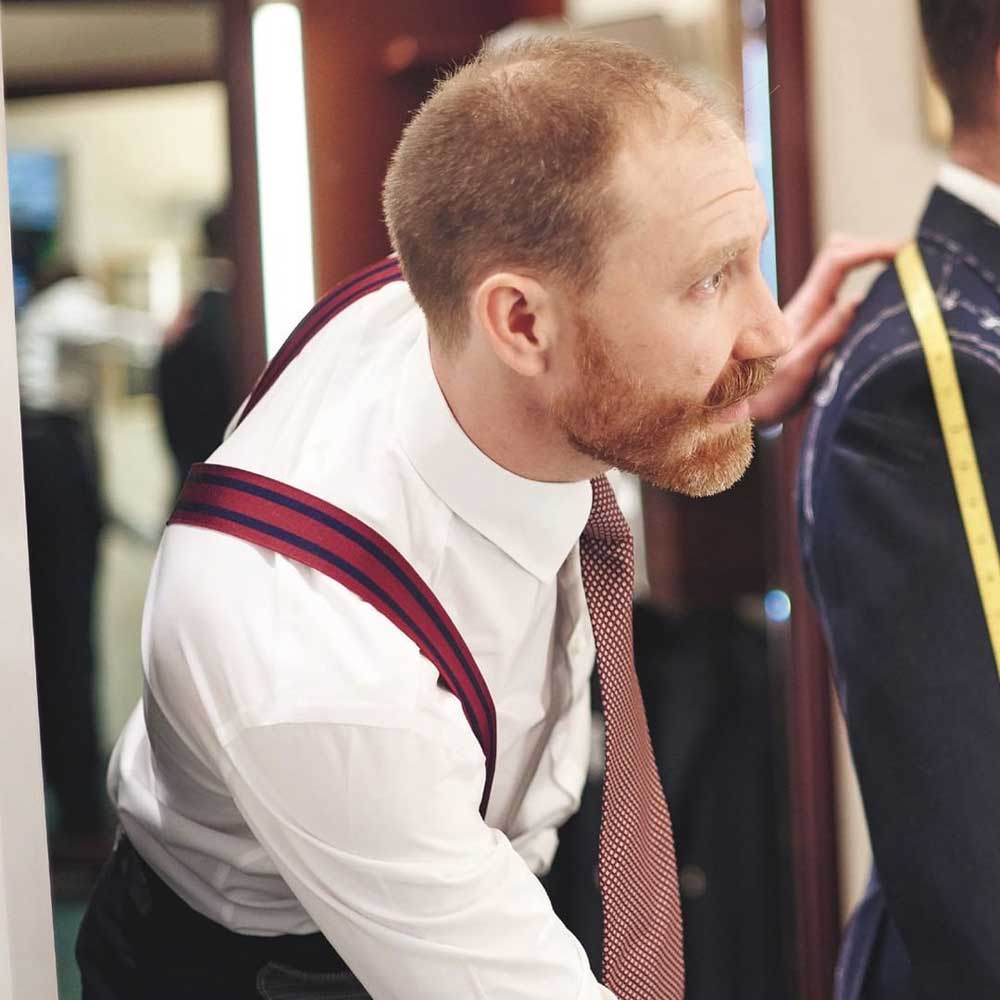
Using these measurements, the cutter drafts a unique paper pattern.
This is perhaps the most crucial step in the bespoke process, as this pattern becomes the blueprint for the entire garment.
It’s worth noting that Savile Row cutters often use a specific type of pattern paper known as ‘manilla’ due to its durability and ability to hold precise chalk lines.
The Cut – Precision Meets Intuition
With the pattern complete, the cutting process begins. This is where the cutter’s expertise truly shines.
Using large shears (never electric cutters, which can damage the cloth), the cutter carefully cuts the chosen fabric.
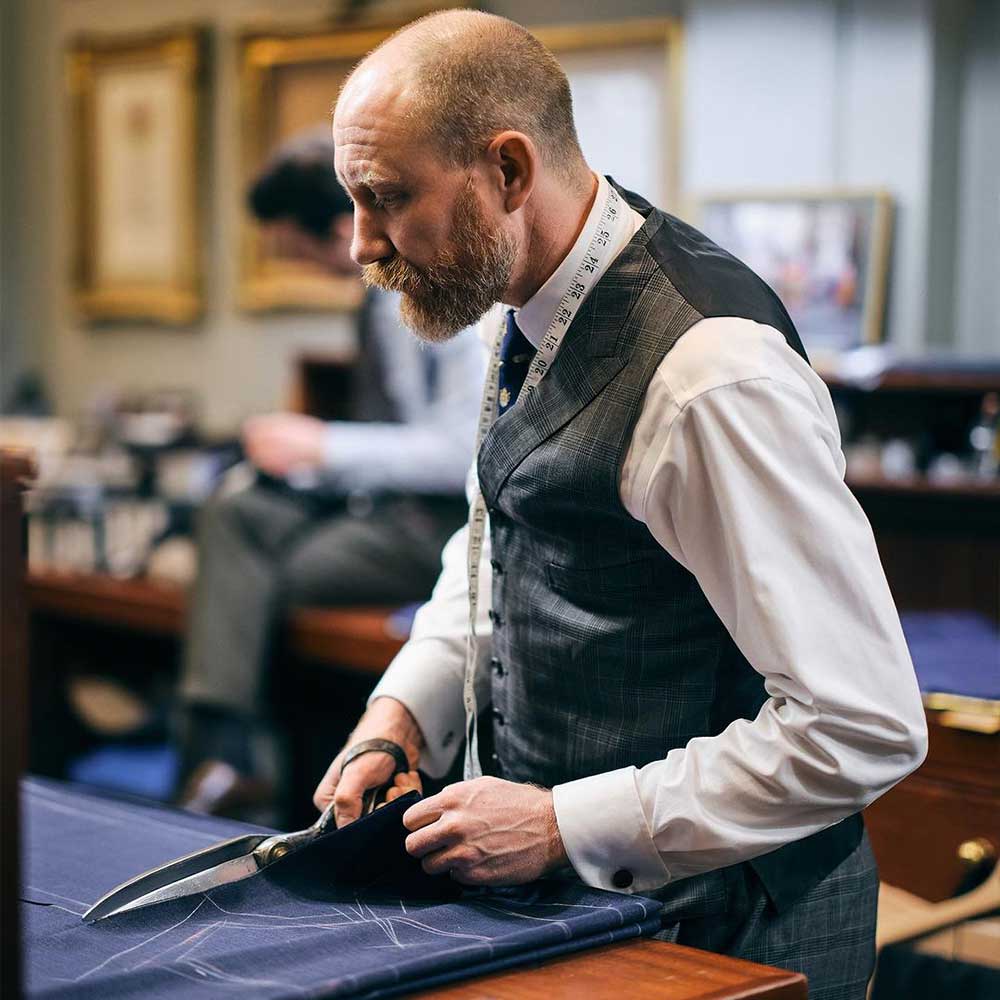
This process requires precision and an intuitive understanding of how different fabrics behave.
A fascinating detail of this stage is the concept of ‘matching’ – in striped or patterned fabrics, the cutter ensures that patterns align perfectly across seams.
This technique requires additional fabric and meticulous planning, contributing to the higher cost of patterned bespoke suits.
Basting and Fittings – Shaping a Savile Row Suit
After cutting, the suit enters the realm of the tailor. The pieces are first ‘basted’ together – a process of loose stitching that allows for easy adjustments.
The first fitting takes place at this stage, where the client tries on this rough version of the suit.
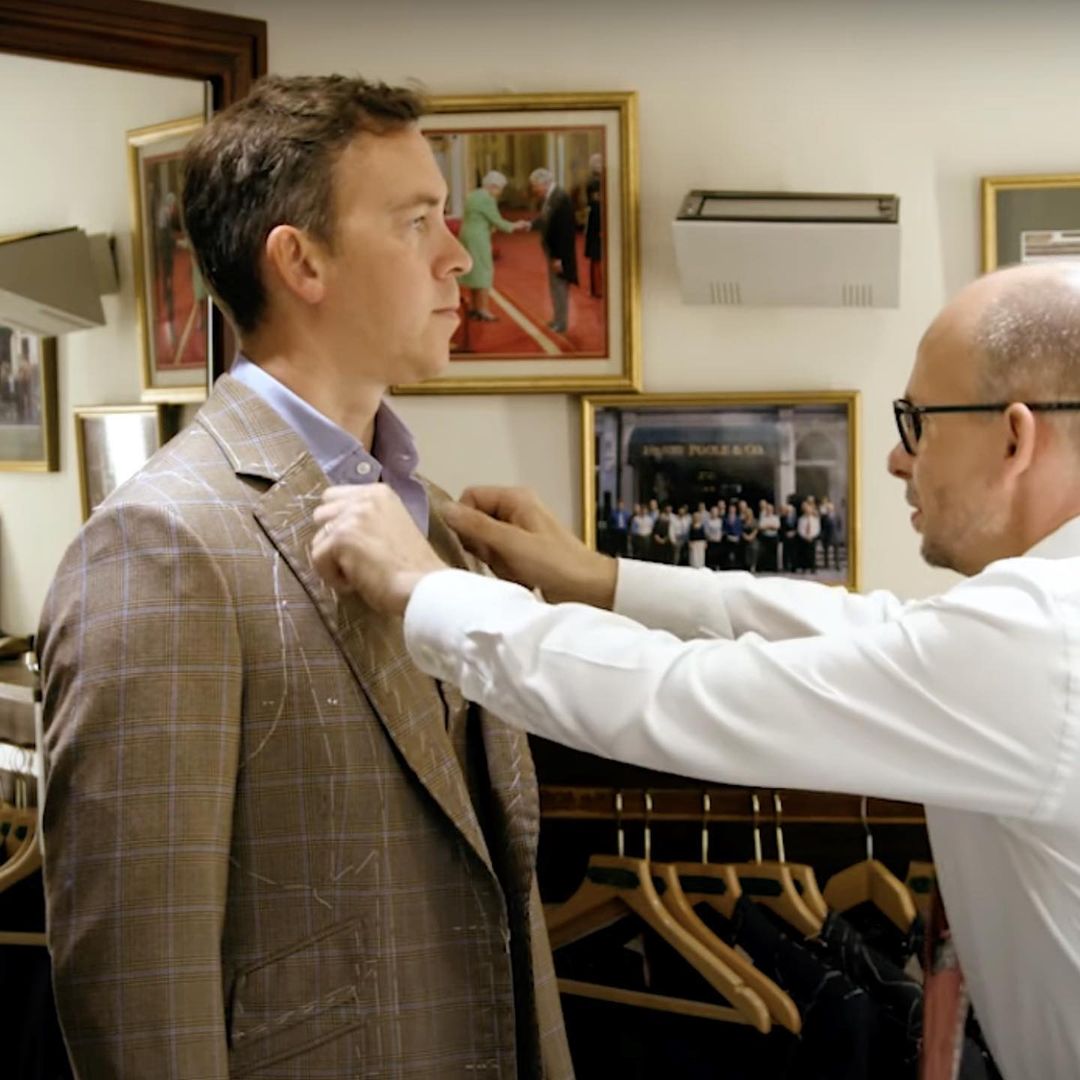
Subsequent fittings refine the garment further. The ‘forward fitting’ sees the suit in a more advanced state, with pockets and lapels taking shape.
It’s at this stage that the true character of the suit begins to emerge.
Finishing Touches – When Tailoring Becomes Art
The final stages of creating a bespoke suit involve a level of detail that truly sets Savile Row apart. Buttonholes are hand-stitched, often taking up to an hour each.
The canvassing – the internal structure of the jacket – is carefully manipulated to create the perfect shape.
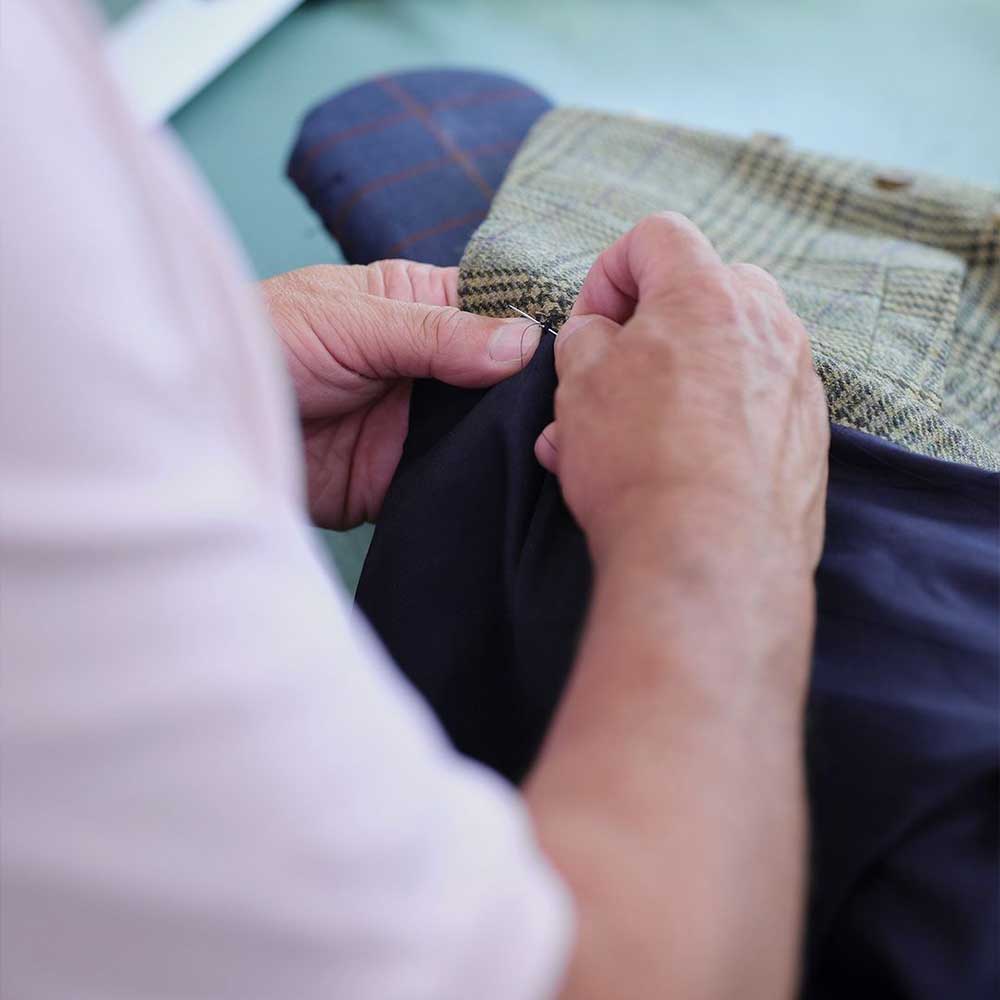
Even the humble trouser fly is a work of art – Savile Row trousers feature a ‘split fall’ front, a traditional design that requires exceptional skill to execute.
One of Savile Row’s most guarded secrets is the art of ‘ironing in shape’.
Master tailors use specialised irons and presses to mould the fabric, creating subtle curves and shapes that enhance the garment’s fit and appearance.
The entire process, from initial consultation to the final product, takes 8 to 12 weeks and involves over 50 hours of handiwork.
Savile Row Suit Anatomy
| Component | Savile Row Distinction | Craftsmanship Detail |
|---|---|---|
| Shoulders | Hand-padded, shaped to individual posture | Up to 1,000 hand stitches |
| Canvassing | Full floating canvas, hand-stitched | Horsehair and cotton, moulded to chest |
| Lapels | Hand-rolled with picked stitching | Perfectly symmetrical, 3D shape |
| Buttonholes | Hand-sewn ‘Milanese’ buttonhole | Each takes up to an hour to create |
| Trouser Waistband | Split-back design for adjustability | Hand-sewn cotton ‘cramming’ for strength |
A Savile Row suit is a symphony of minute details, each contributing to its overall excellence.
Understanding these elements deepens one’s appreciation for the craft and helps discern the quality that sets Savile Row apart.
Let’s dissect the anatomy of a Savile Row suit, exploring the hidden artistry that makes these garments truly exceptional.
The Foundation – Canvassing
At the heart of every Savile Row jacket lies its canvas – a structural element that gives the garment its shape and longevity.
Unlike mass-produced suits that often use fused (glued) interlinings, Savile Row suits feature a full floating canvas.
This canvas, typically made from horsehair, cotton, and sometimes linen, is entirely hand-stitched to the fabric.
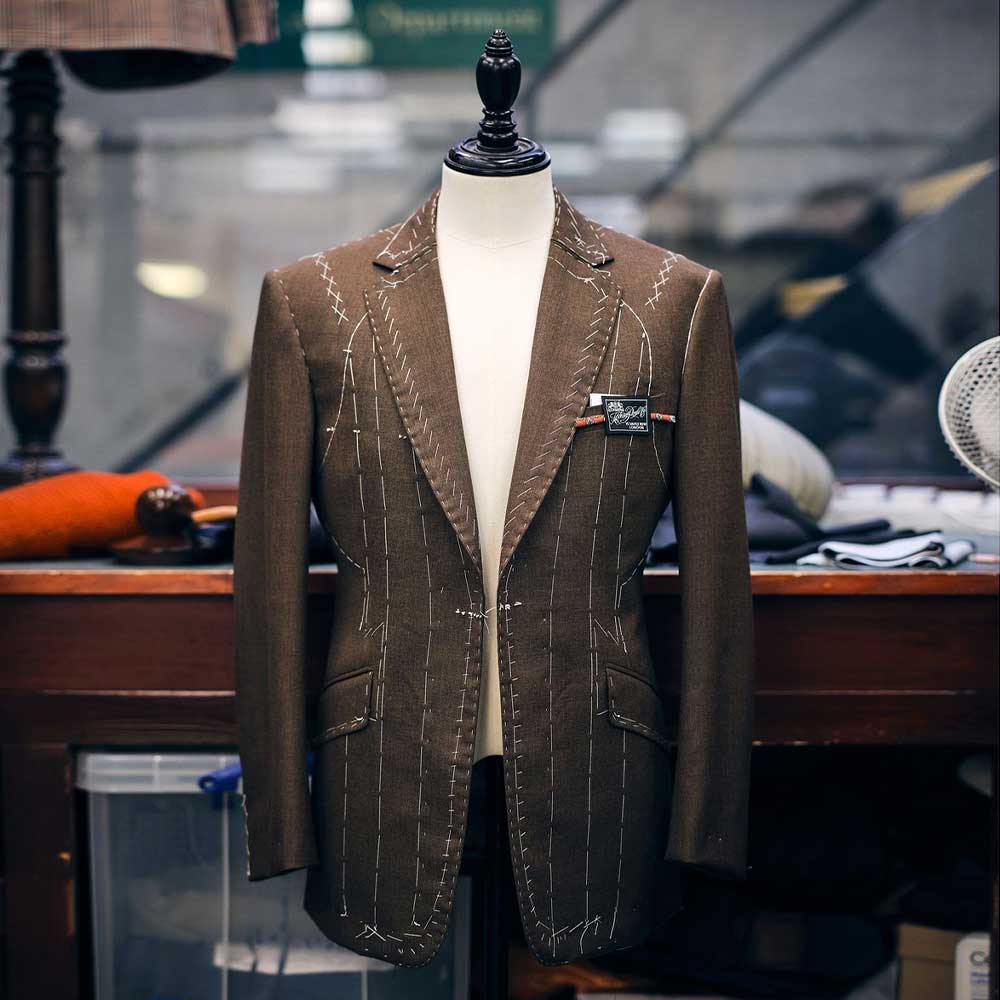
Over time, it moulds to the wearer’s body, creating a truly personalised fit.
The process of installing this canvas is laborious, involving thousands of tiny stitches, but it results in a jacket that drapes beautifully and improves with wear.
A little-known fact: Some Row tailors still use small amounts of wadding made from soybean fibre – a tradition dating back to World War II rationing when innovative materials were sought to replace scarce resources.
The Shoulders – Power Play
The shoulder of a Savile Row jacket is a marvel of engineering. While the exact construction varies between houses, all share a commitment to hand-crafted excellence.
The shoulder pad, often made of layers of cotton and horsehair, is carefully shaped to complement the wearer’s natural shoulder line.
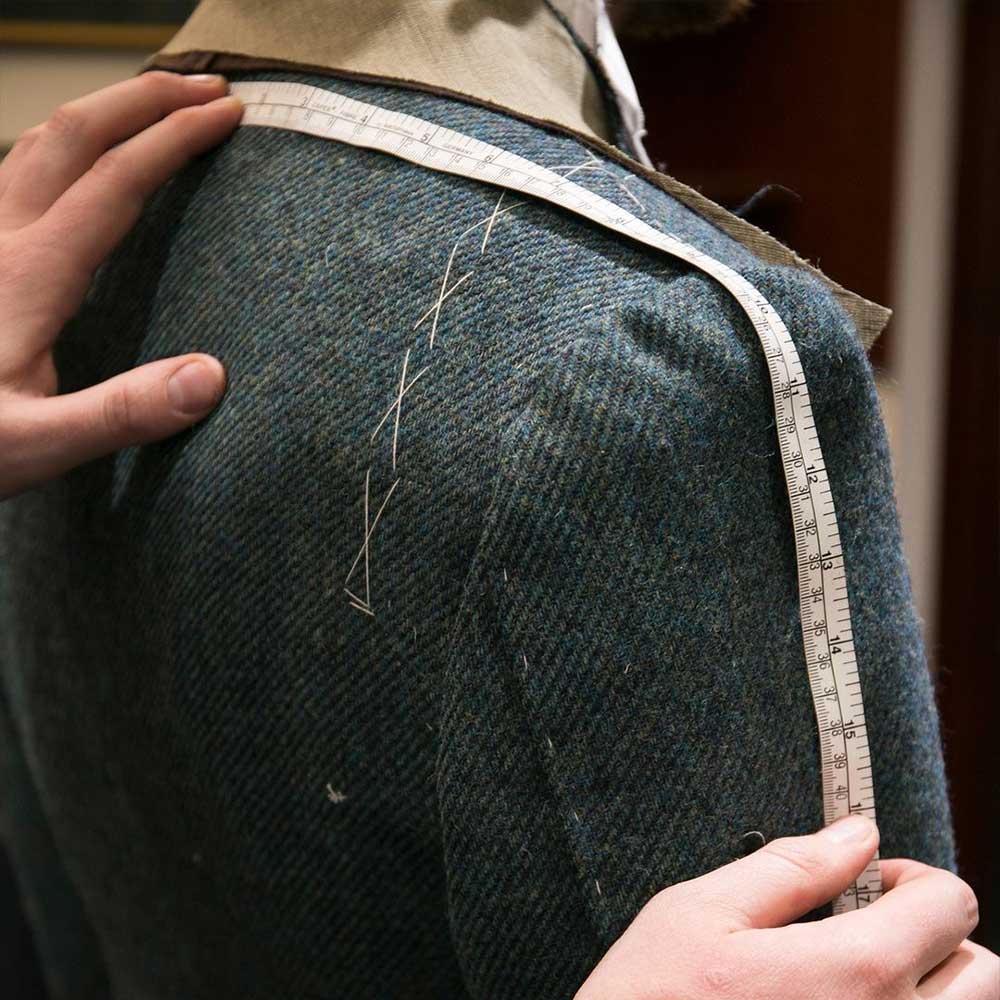
What truly sets Savile Row shoulders apart is the ‘roping’ – the slight elevation at the shoulder’s edge where it meets the sleeve.
This is achieved through skilful manipulation of the cloth and padding, creating a subtle but powerful silhouette.
Interestingly, even ‘natural shoulder’ cuts, like those favoured by Anderson & Sheppard, involve intricate internal structuring to achieve an effortless Old Money look.
The Lapels – The Face of the Jacket
Savile Row lapels are distinguished by their three-dimensional quality. This is achieved through a process called ‘rolling’ where the lapel is carefully manipulated by hand to create a gentle curve that sits elegantly on the chest.
The edge of the lapel often features ‘pick stitching’ – tiny, barely visible hand stitches that add strength and create a subtle decorative element.
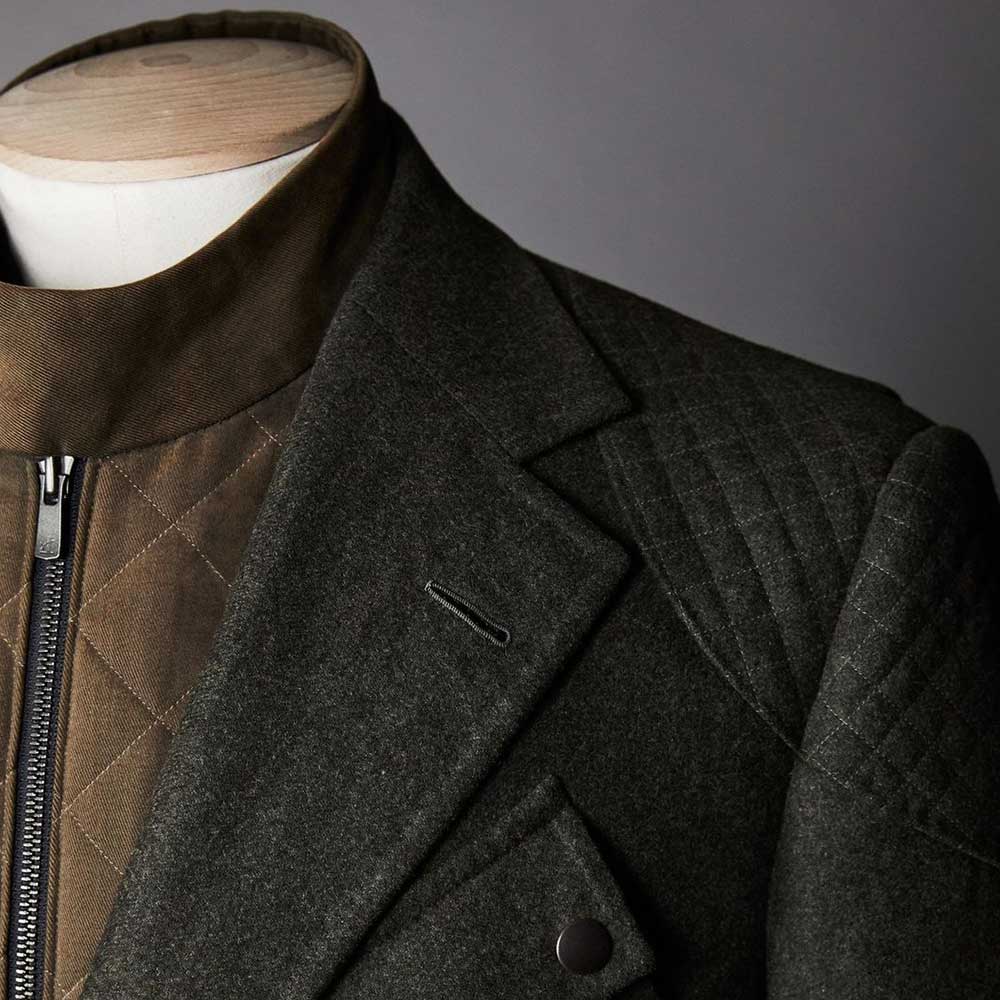
The gorge line (where the lapel meets the collar) is precisely angled to complement the wearer’s neck and chest.
A unique feature of many Savile Row lapels is the ‘Barchetta’ pocket – a slightly curved breast pocket that follows the natural line of the chest, named after the Italian word for ‘little boat’.
The Buttonholes – Miniature Masterpieces
Perhaps nothing exemplifies better the attention to detail in a Savile Row suit than its buttonholes.
The ‘Milanese’ buttonhole, a hallmark of finest tailoring, is created entirely by hand, often taking up to an hour each.
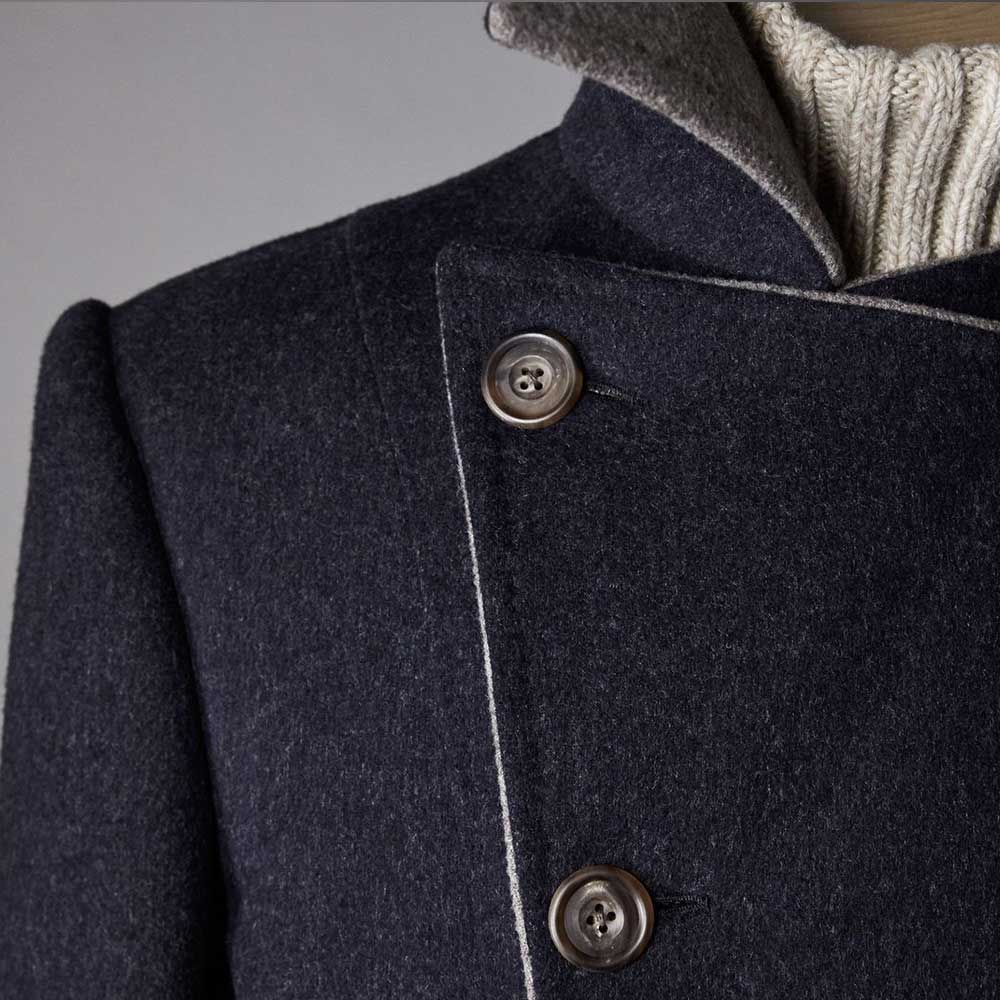
These buttonholes are not merely functional; they’re decorative elements in their own right. The keyhole shape, the precise gimp cord outlining, and the invisible knot at the end are all signs of master craftsmanship.
An insider detail: Some tailors create a slightly larger buttonhole on the lapel for a boutonnière, anticipating the client’s future need without making it obvious.
The Trousers
While jackets often steal the spotlight, Savile Row trousers are equally masterful creations.
The split-back waistband, a common feature, allows for easy alteration and a more comfortable fit.
Inside the waistband, you’ll find ‘cramming’ – dense, hand-sewn cotton stitching that provides strength and prevents stretching.
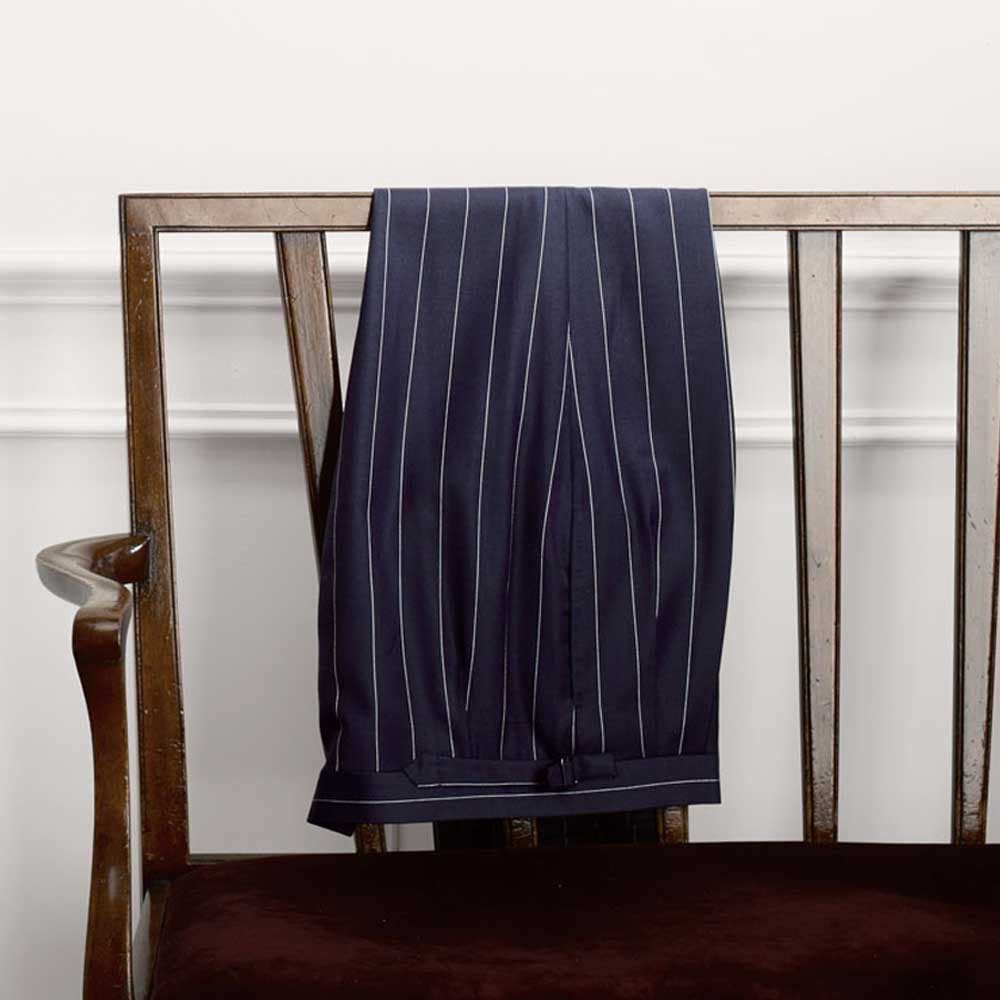
The front closure often features a traditional ‘fish tail’ back, allowing the waistband to sit flush against the body.
A subtle but significant detail is the ‘bracing buttons’ inside the waistband. These allow for attaching braces (suspenders) without visible external buttons, maintaining a clean line.
Lining – Finishing Touches
The lining of a Savile Row suit is always hand-sewn, creating a ‘bag’ that moves independently from the outer fabric, enhancing comfort and longevity.
The sleeve lining is often left open at the cuff (‘fishmouth’ style), allowing for easier alterations.
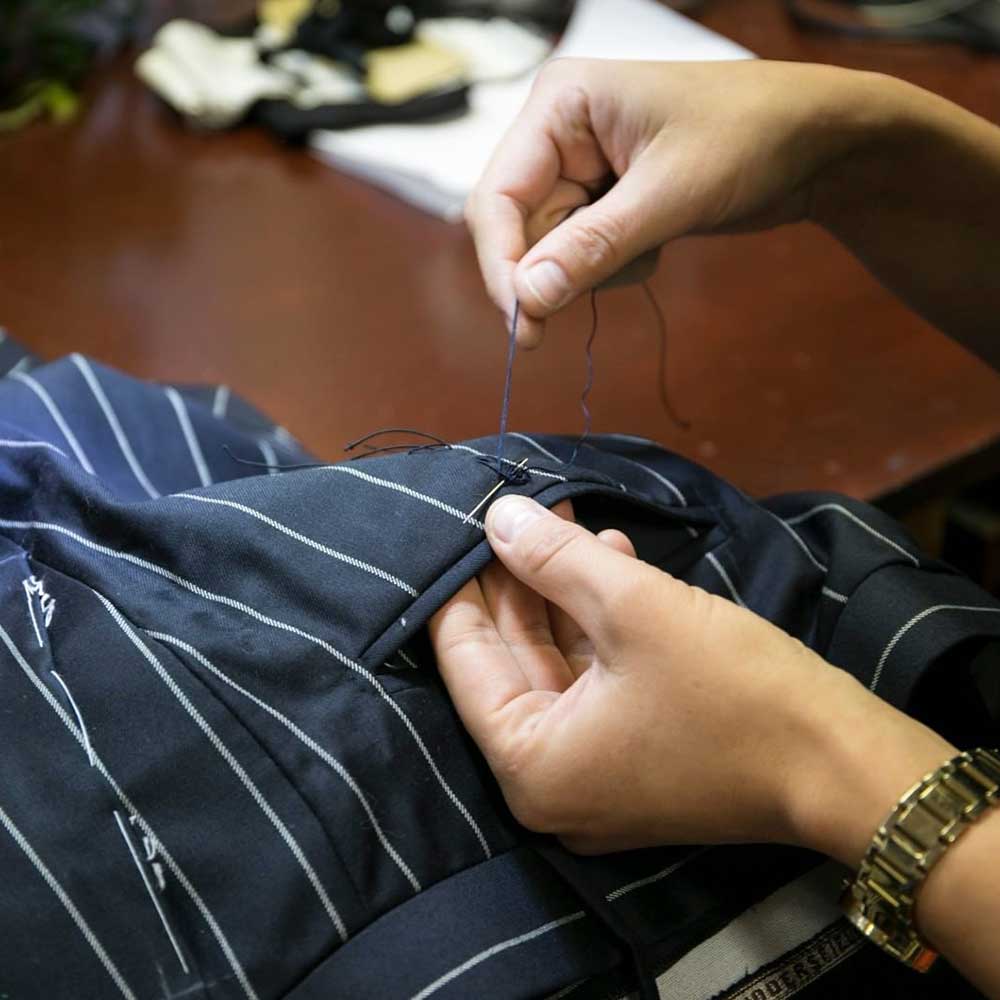
Finally, pressing a Savile Row suit is an art form in itself. Using heavy irons and a process called ‘shrinking on fullness,’ tailors create three-dimensional shapes in the cloth that enhance the fit and drape of the garment.
Essentially, a Savile Row suit is more than the sum of its parts. It’s a garment where every stitch, every curve, and every detail has been carefully considered and expertly executed.
The result is not just a suit but a wearable work of art that embodies centuries of tailoring tradition.
Savile Row Complete Wardrobe – Beyond the Suit
| Garment | Key Features | Savile Row Speciality |
|---|---|---|
| Bespoke Shirt | Hand-attached collar, split yoke, hand-sewn buttons | Turnbull & Asser, Budd Shirtmakers |
| Overcoat | Full canvas construction, hand-set sleeves, horn buttons | Gieves & Hawkes, Richard Anderson |
| Smoking Jacket | Silk-faced lapels, frogged closures, quilted shawl collar | Henry Poole & Co., Huntsman |
| Morning Coat | Perfectly cut skirts, hand-padded lapels, striped trousers | Anderson & Sheppard, Dege & Skinner |
| Bespoke Shoes | Hand-lasted, Goodyear welted, personalised fit | John Lobb, George Cleverley |
While the suit remains the cornerstone of Savile Row tailoring, a truly complete gentleman’s wardrobe encompasses a range of bespoke garments and accessories.
Each piece is crafted with the same attention to detail and commitment to quality that defines Savile Row, creating a comprehensive wardrobe that caters to every aspect of a refined lifestyle.
Bespoke Shirt
A Savile Row bespoke shirt is a marvel of precision and comfort. Crafted from the finest cotton – often Sea Island or Egyptian Giza – these shirts are cut to complement the wearer’s physique perfectly.
The hallmarks of a Savile Row shirt include a hand-attached collar, ensuring a perfect roll and sit; a split yoke for enhanced movement and pattern matching; and hand-sewn buttons using the traditional crow’s foot stitch for durability.
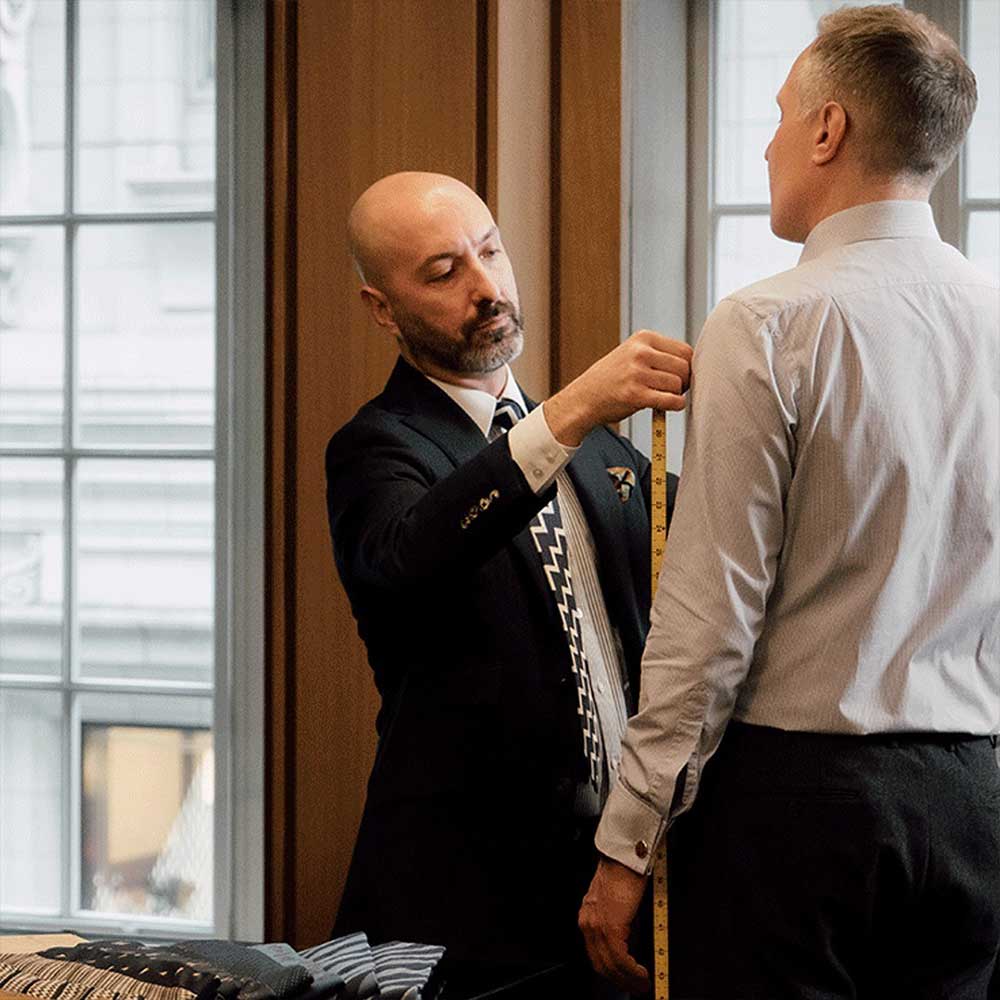
Turnbull & Asser, shirtmakers to Prince Charles, are renowned for their robust collars and cuffs, while Budd Shirtmakers, one of the last remaining West End shirtmakers, are celebrated for their hand-cut patterns and traditional construction methods.
An insider’s tip: Request a ‘gauntlet button’ on the sleeve placket – a hallmark of bespoke shirtmaking rarely found in off-the-peg offerings.
Overcoat
A Savile Row overcoat is not merely outerwear; it’s a masterpiece of tailoring in its own right. Typically cut from luxurious fabrics like cashmere, camel hair, or British wool, these coats feature full canvas construction for shape retention and warmth.
The attention to detail is extraordinary: hand-set sleeves for a clean shoulder line, hand-finished buttonholes, and often a half-belt at the back for a subtle nod to military heritage.
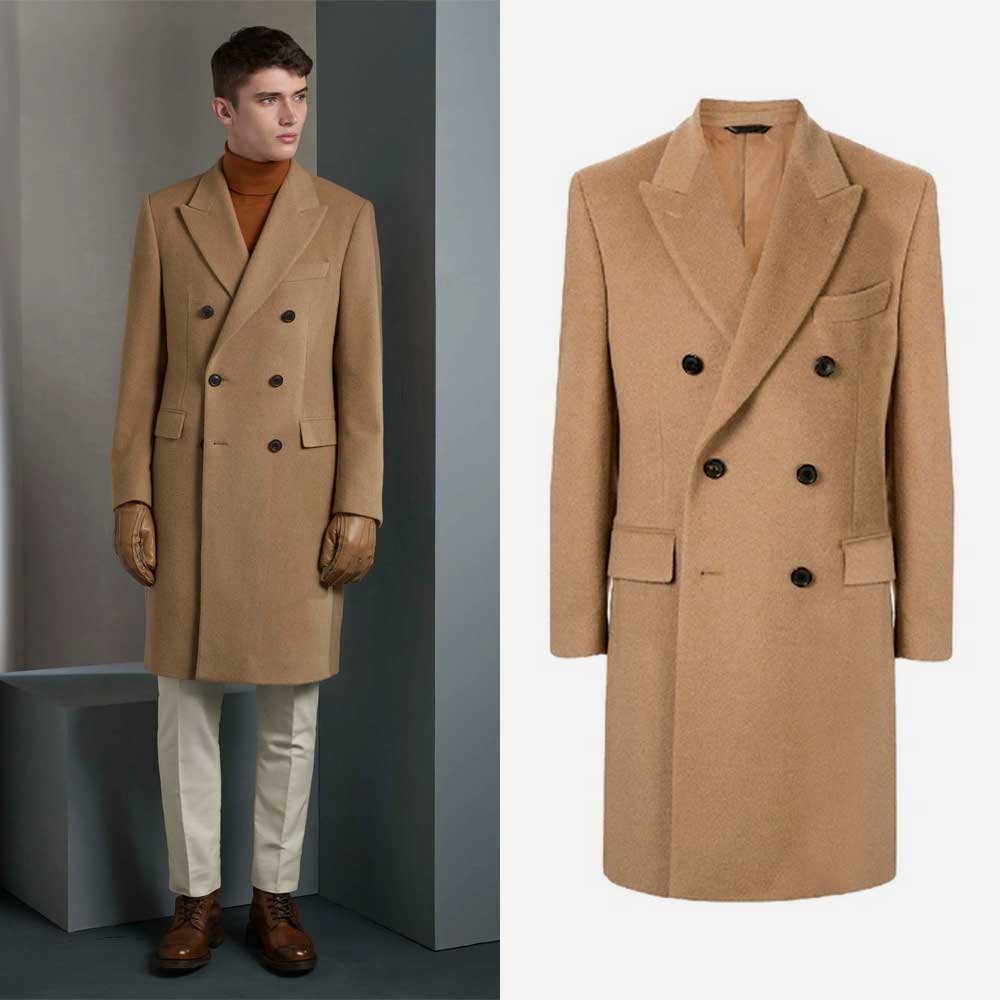
Gieves & Hawkes excel in military-inspired overcoats with their strong shoulder line, while Richard Anderson is known for innovative fabric choices, including water-resistant wool blends perfect for the British climate.
A unique feature: Some Row tailors still offer coats with a ‘capelet’ – a short shoulder cape that adds both style and weather protection, a detail rarely seen in modern ready-to-wear.
Smoking Jacket
Originally designed as a comfortable garment for gentlemen to wear while enjoying cigars (hence the name), the smoking jacket has evolved into a stylish alternative to the dinner jacket for less formal evening occasions.
Savile Row smoking jackets are typically crafted from sumptuous velvet or silk, featuring contrast silk-faced lapels and traditional frogged closures. The shawl collar is often quilted by hand, creating a subtle yet luxurious detail.
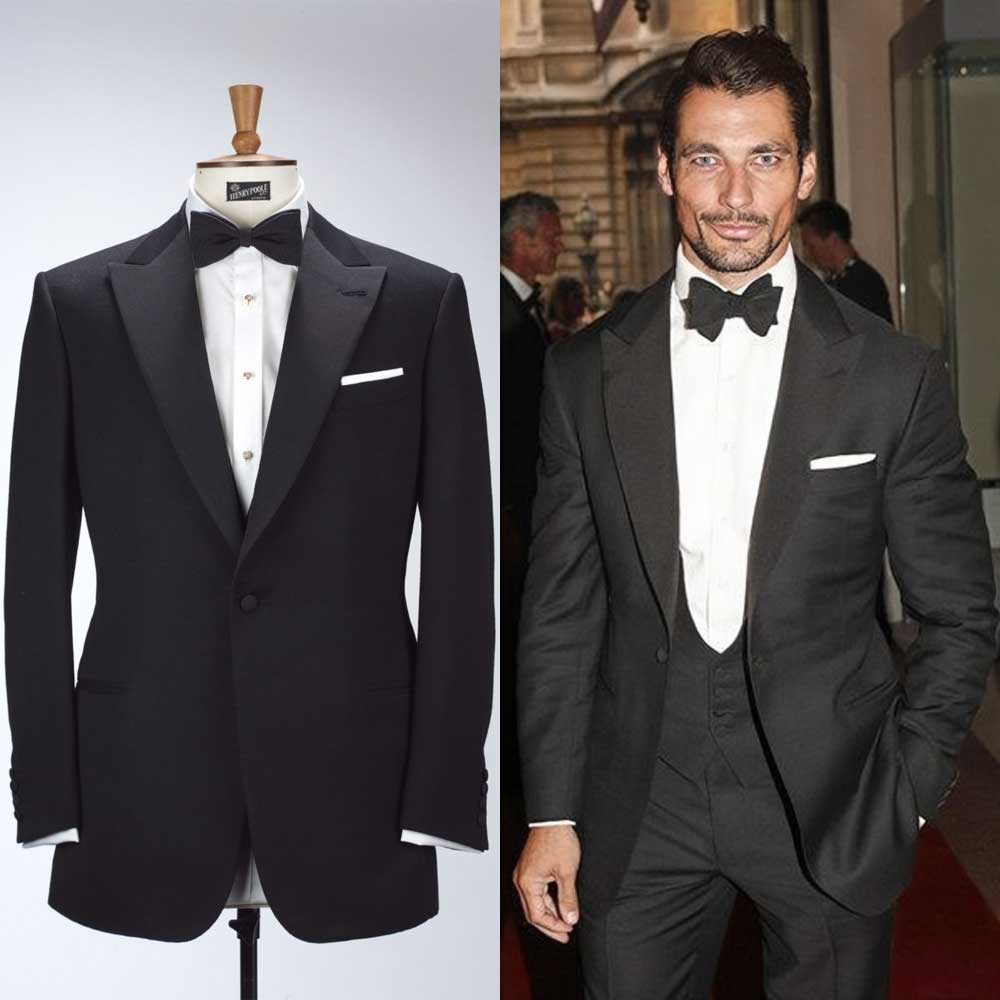
Henry Poole & Co., inventors of the dinner jacket, offer classic iterations in rich jewel tones, while Huntsman’s versions often feature bold patterns or embroidery, reflecting their history of creating bespoke smoking jackets for Hollywood royalty.
An interesting detail: Some Row tailors still line their smoking jackets with fireproof fur felt, a nod to the garment’s original protective purpose.
Morning Coat
For formal daytime events, particularly those in the presence of royalty, the morning coat remains the gold standard. Savile Row’s expertise in this traditional garment is unparalleled.
The key to a perfect morning coat lies in the cut of the skirts – they should follow the line of the body seamlessly, with no breaks or wrinkles. The lapels are typically hand-padded for a gentle roll, and the accompanying striped trousers are cut high on the waist for an elegant line.
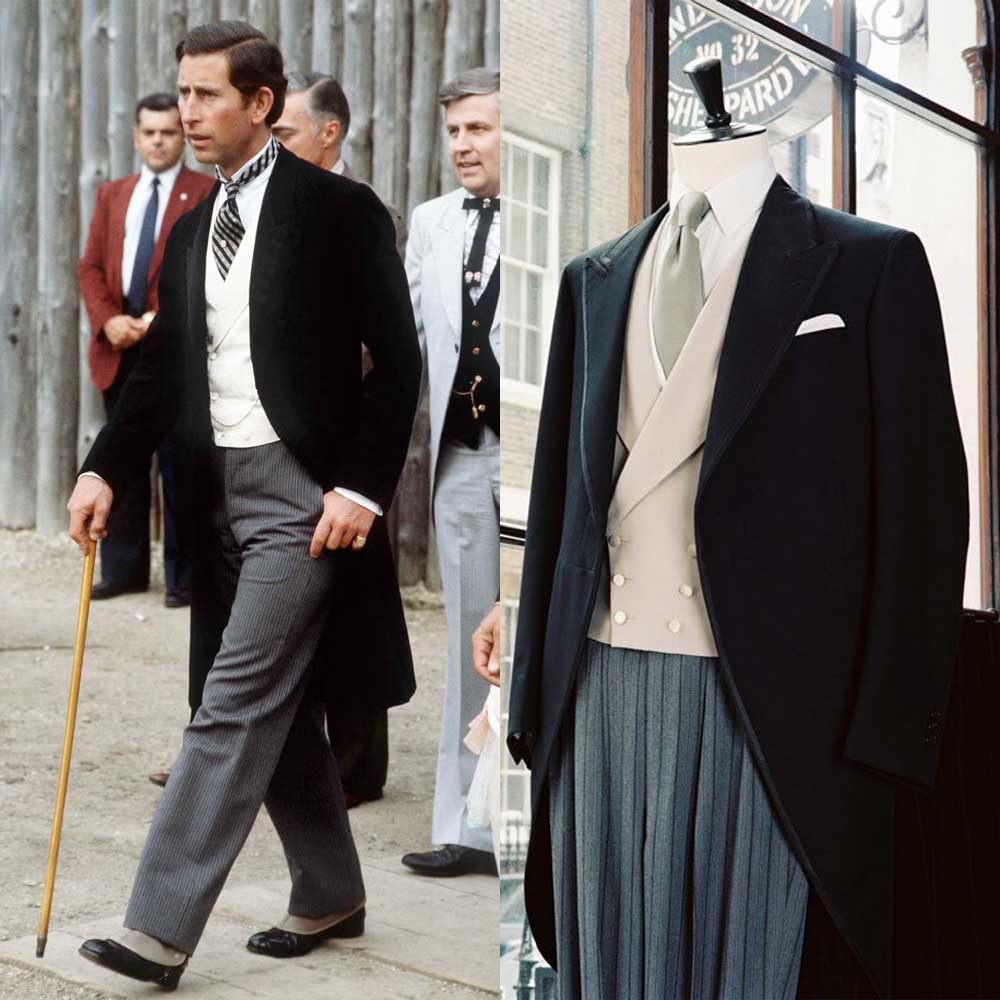
Anderson & Sheppard’s softer construction allows for more comfortable wear, while Dege & Skinner, with their royal warranted expertise in ceremonial dress, offer a more structured, formal cut.
A little-known fact: The buttons on a proper morning coat are individually hand-stitched to the cloth-faced button stand, allowing them to sit perfectly flat.
Bespoke Shoes
While not strictly part of Savile Row, several bespoke shoemakers in the vicinity complete the Row’s offering.
These artisans create shoes that are not just perfectly fitted but works of art in their own right.
Bespoke shoes are hand-lasted to the client’s precise measurements and gait analysis. They typically feature Goodyear welted construction for longevity and often incorporate hidden details like cork footbeds for comfort.
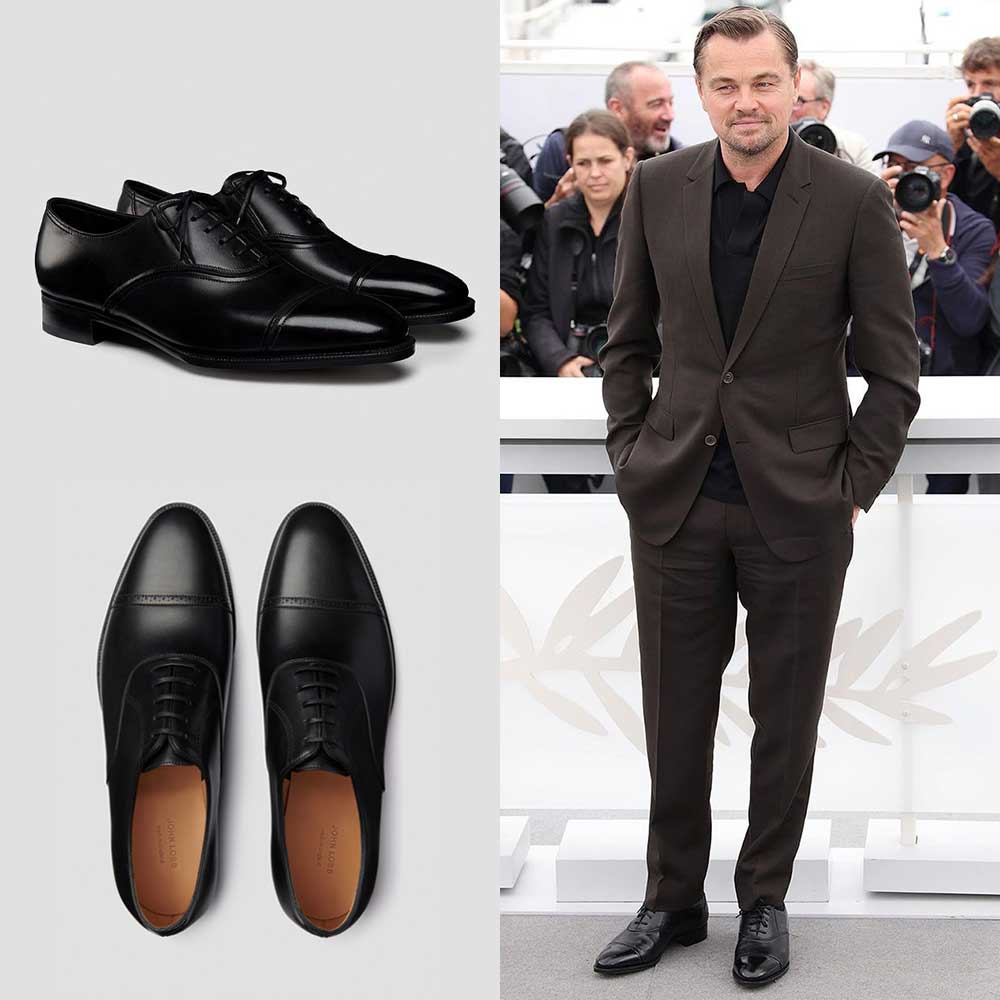
John Lobb, bootmakers to royalty, are known for their elegant lasts and meticulous hand-finishing. Though John Lobb shoe prices are super high, they offer exceptional quality, artisanal craftsmanship and an unparalleled prestige, making them a worthwhile investment.
At the same time, George Cleverley offers a distinctive chiselled toe that has become a hallmark of British shoe style.
An expert tip: Commission your bespoke shoes before your suit. The slight heel pitch of bespoke shoes can affect your posture, which your Row tailor will account for in cutting your trousers.
A complete Savile Row wardrobe is a testament to the breadth and depth of British tailoring expertise.
Each constituent part, from the hidden details of a bespoke shirt to the sweeping skirts of a morning coat, celebrates craftsmanship and personal style.
Together, they form a sartorial arsenal that equips you for any occasion and always ensures you’re dressed exceptionally well.
Savile Row Styling Ideas by Season
The true mastery of Savile Row tailoring lies not just in its impeccable craftsmanship but in its versatility across all seasons.
Here, we present four exquisite outfit ideas, each tailored to a specific season, showcasing the breadth and depth of Savile Row’s sartorial prowess.
Spring
As the first blossoms of spring emerge, so too should a gentleman’s wardrobe bloom with renewed vigour.
For this ensemble, we turn to the expertise of Anderson & Sheppard, known for their softer, more fluid silhouettes.
Envision a light wool-silk blend suit in a subtle glen check pattern featuring shades of sky blue and pale grey.
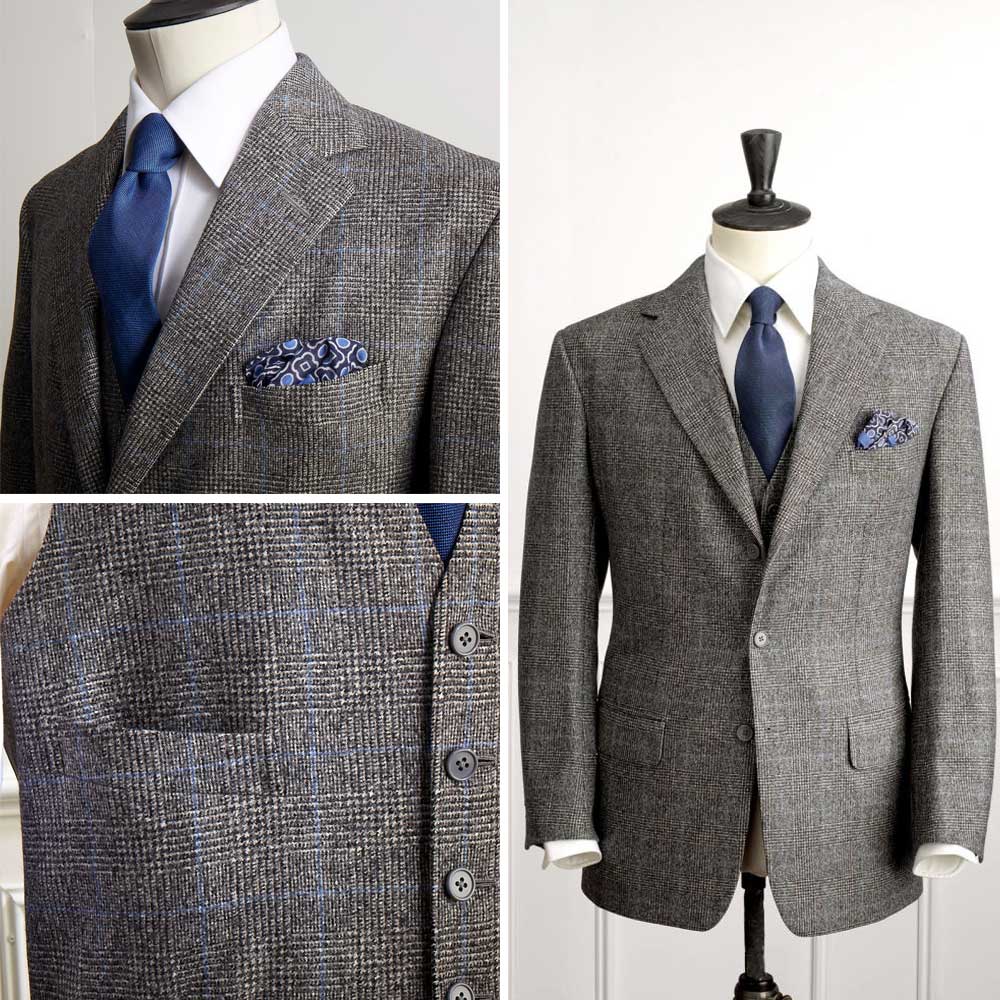
The jacket, cut in Anderson & Sheppard’s signature drape style, offers a relaxed elegance perfect for the season.
Pair with a white Turnbull & Asser shirt featuring their renowned ‘Regent’ collar – a moderate spread that flatters most face shapes.
Accessorise with a Drake’s Ancient Madder silk tie in a muted coral, its paisley pattern echoing the rebirth of spring.
Wear chestnut brown suede loafers from George Cleverley – their ‘Bradley’ model strikes the perfect balance between formal and relaxed.
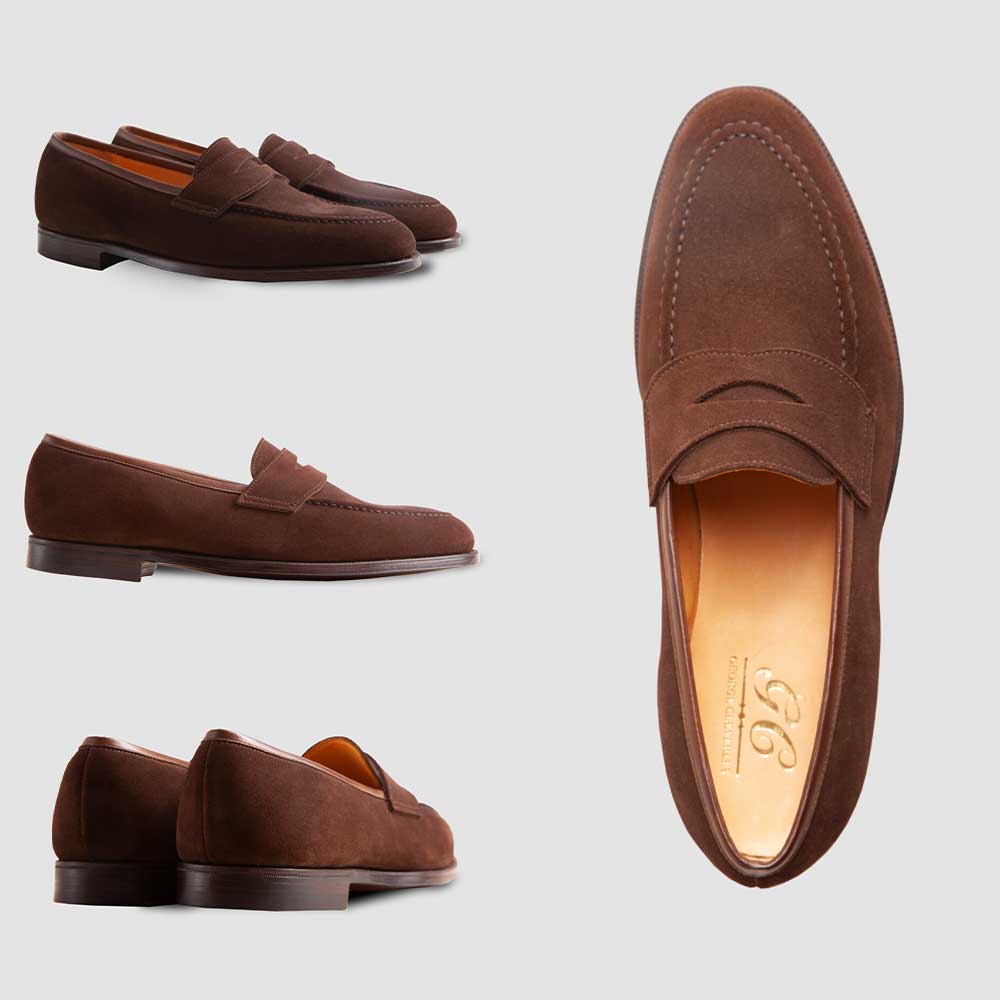
Crown the outfit with a vintage Locks & Co. ‘Voyager’ fedora in light grey – its rollable construction makes it an ideal travel companion for the global diplomat.
Summer
When the mercury rises, the discerning gentleman turns to Huntsman for a summer suit that combines breeziness with British elegance.
Picture a single-breasted, one-button jacket in their signature cut, crafted from lightweight, open-weave linen in a rich tan colour.
The higher armholes and slightly nipped waist create a strong silhouette without sacrificing comfort.
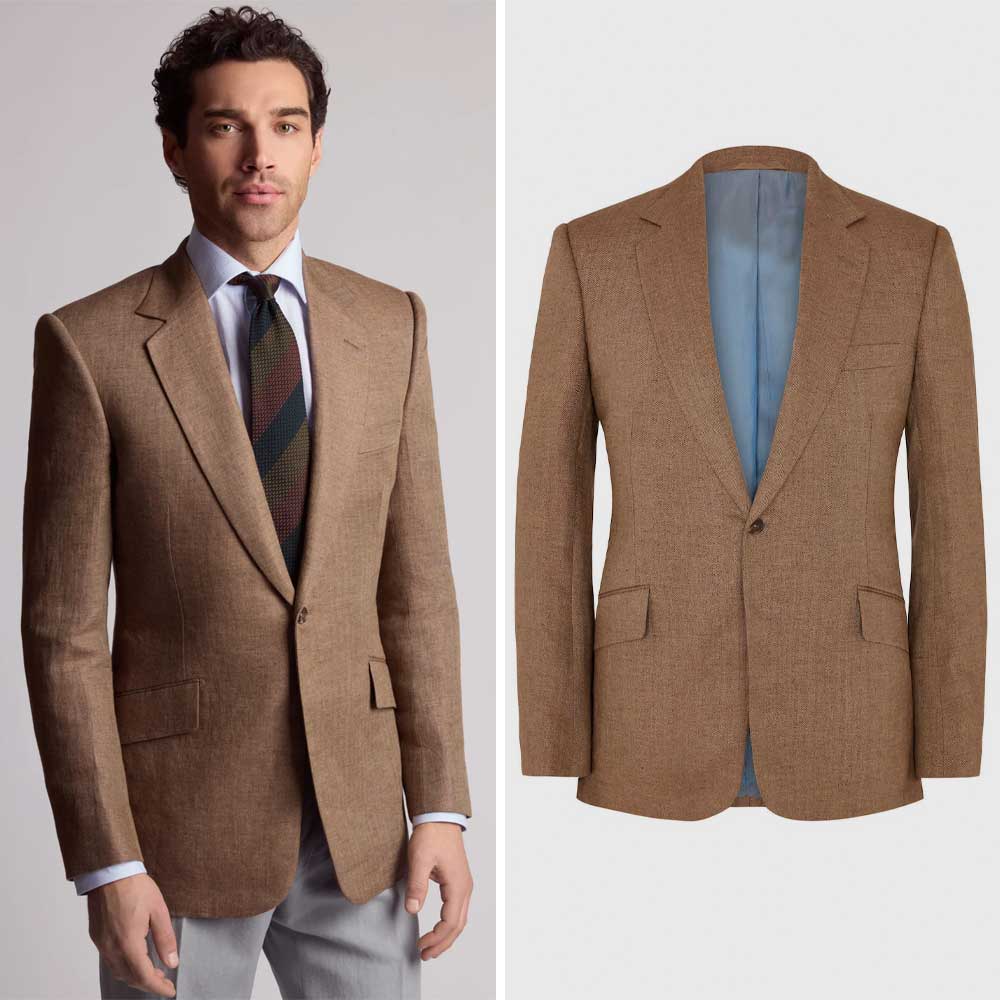
Underneath, opt for a soft pink Sea Island cotton shirt from Budd Shirtmakers.
Their ‘Budd’ collar, with its slightly longer points, adds a touch of old-world charm.
The trousers, cut with a higher rise typical of Huntsman, are finished with elegant side adjusters rather than belt loops, maintaining a clean line.
Accessorise with a knitted silk tie in navy from Charvet. Its texture provides a pleasing contrast to the suit’s smooth linen.
For footwear, consider the Edward Green ‘Chelsea’ model in dark oak antique calf—a classic Oxford elevated by the brand’s signature burnished finish.
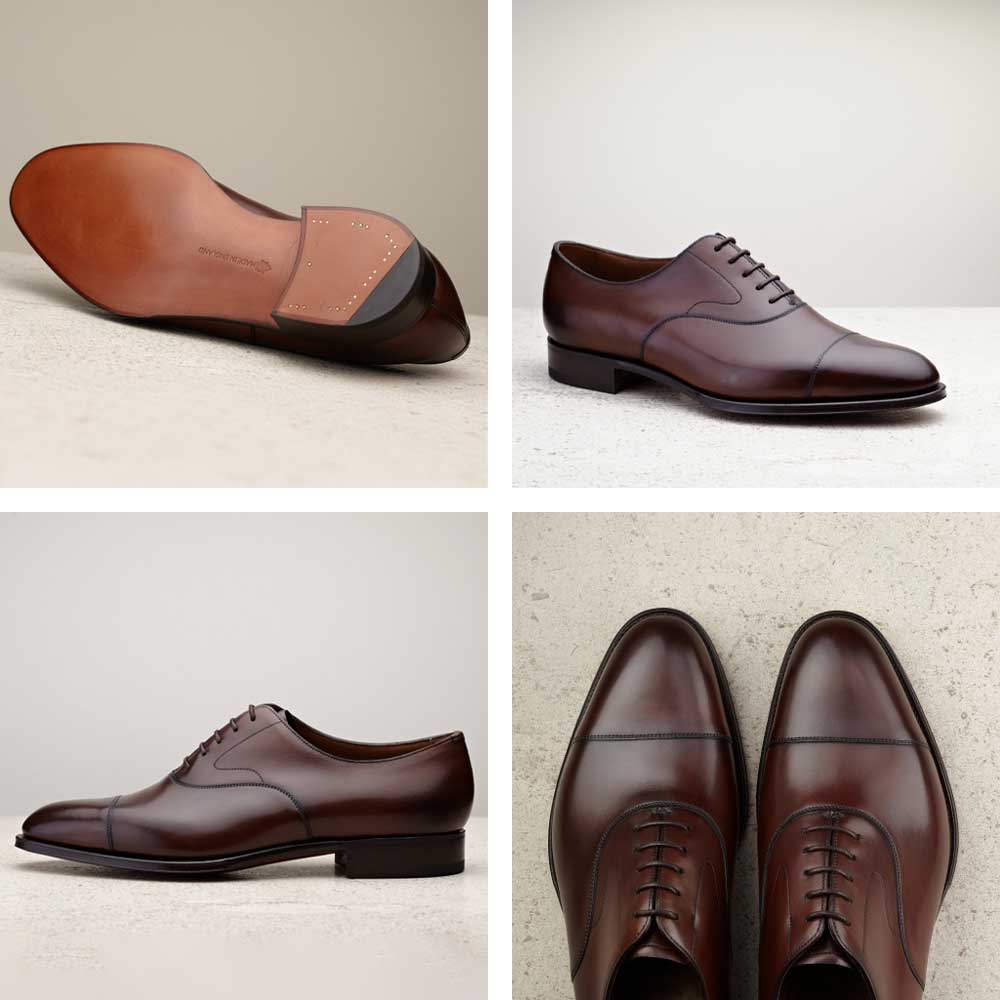
Complete the look with a pocket square from Rubinacci, hand-rolled and featuring a vintage print of sailing boats nodding to aristocratic summer pursuits.
Autumn
As leaves turn golden, so too should a gentleman’s wardrobe adapt to richer hues and heartier fabrics.
For this autumnal ensemble, we look to Henry Poole & Co., masters of the classic English cut.
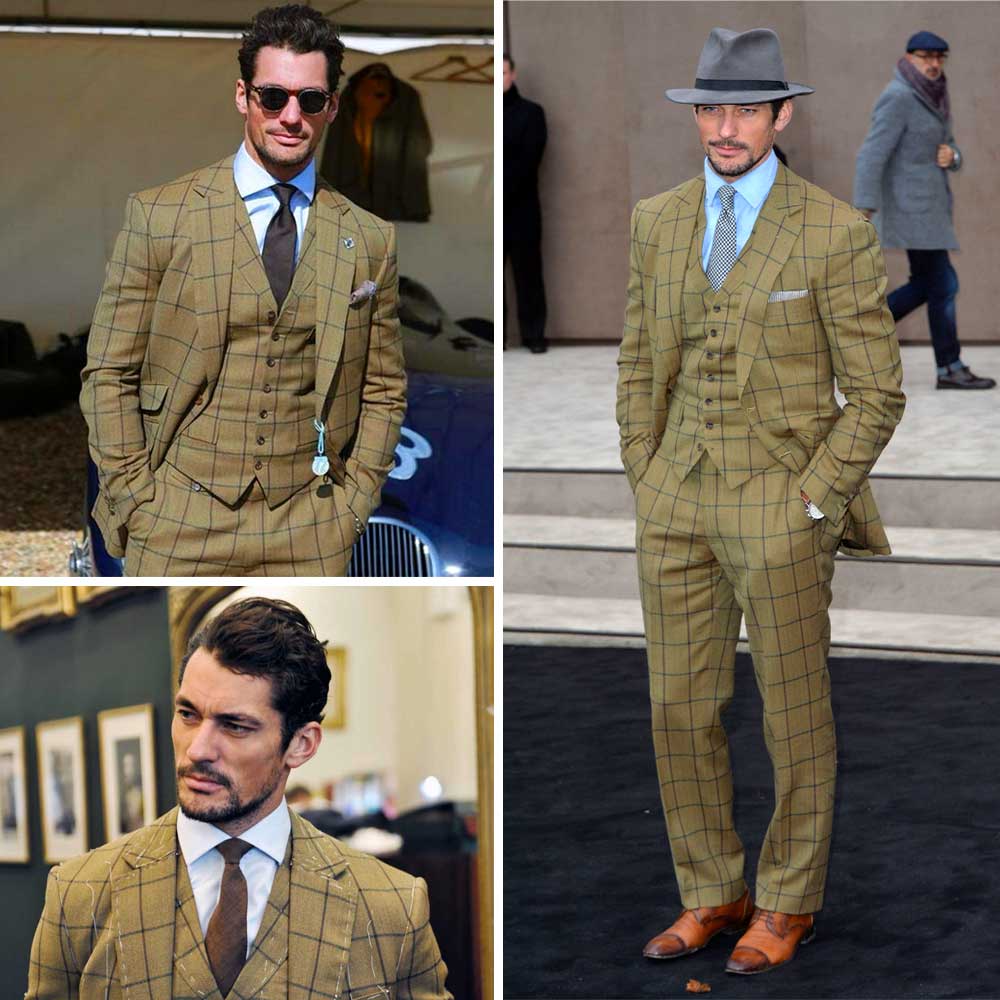
Imagine a three-piece suit in a Fox Brothers windowpane check flannel, combining dark beige with subtle accents of deep brown and green.
The jacket features Poole’s structured shoulder and gently suppressed waist, creating a powerful yet elegant silhouette.
The matching waistcoat, always the hallmark of a true connoisseur, adds an extra layer of sophistication and warmth.
Pair this with a cream shirt from Hilditch & Key, opting for their signature ‘Imperial’ twill fabric and a classic spread collar.
The tie, a seven-fold masterpiece from E. Marinella in Naples, features a motif of pheasants in flight against a background of deep burgundy silk – a nod to the season’s hunting traditions.
Wear burgundy cordovan derby shoes from Crockett & Jones. Their ‘Pembroke’ model, with its storm-welt construction, provides both comfort and style.
Top off the ensemble with a Lock & Co. ‘Rambler’ hat in dark green felt – the slightly relaxed shape complements perfectly the structured suit.
Winter
When winter’s chill sets in, the Savile Row aficionado turns to heavier fabrics and layered elegance.
For this ensemble, we draw inspiration from Gieves & Hawkes, whose military heritage informs a sharp, commanding look.
At the heart of this outfit is a Chesterfield overcoat in dark navy doeskin cloth.
Cut with strong shoulders and a suppressed waist; it offers both warmth and a striking silhouette.
Beneath, a chalk stripe flannel suit in charcoal grey, the widely spaced stripes elongating the figure.
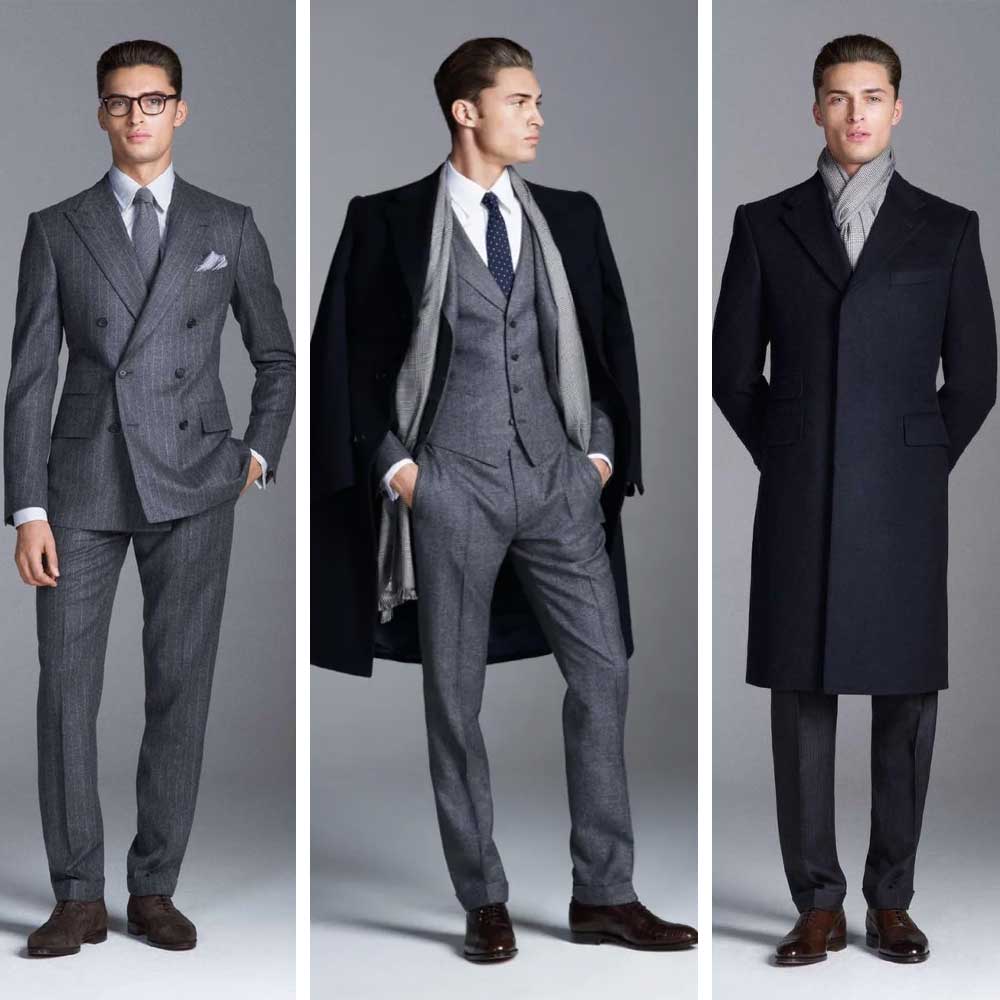
The shirt, from Harvie & Hudson, is crafted from their heaviest Sea Island cotton in a pale blue. Its substantial fabric stands up well to the suit’s weight.
Adorn the neck with an ancient madder silk scarf from New & Lingwood; its paisley pattern in shades of burgundy and gold provides a splash of controlled exuberance.
For footwear, opt for a pair of black Oxford brogues from John Lobb, their ‘Philip II’ model offering a perfect blend of elegance and practicality with its Goodyear-welted double leather sole.
Complete the look with slate grey chamois leather gloves from Dents, lined in cashmere, for unparalleled warmth and comfort.
This ensemble embodies the essence of winter elegance—layers of luxurious fabrics in rich, deep colours create a look that is at once commanding and supremely comfortable.
Savile Row Tailoring Houses to Know
| Tailoring House | Established | Signature Style | Notable Clientele |
|---|---|---|---|
| Henry Poole & Co | 1806 | Originator of the dinner jacket; classic English cut | Winston Churchill, Charles Dickens |
| Gieves & Hawkes | 1771 | Military-inspired with structured shoulders | The British Royal Family, David Beckham |
| Anderson & Sheppard | 1906 | Soft ‘drape cut’ with natural shoulders | Fred Astaire, Prince Charles |
| Huntsman | 1849 | One-button jacket with a defined waist | Gregory Peck, Alexander McQueen |
| Dege & Skinner | 1865 | Military uniforms and classic English style | Royal families, Michael Jackson |
Savile Row is home to some of the world’s most prestigious tailoring houses, each with its own unique history, clientele, and house style.
While all adhere to the exacting standards of Savile Row bespoke, these establishments have developed distinct identities that cater to different tastes and preferences.
Let’s explore some of the most renowned names on the Row.
Henry Poole & Co.
Savile Row Founding Father
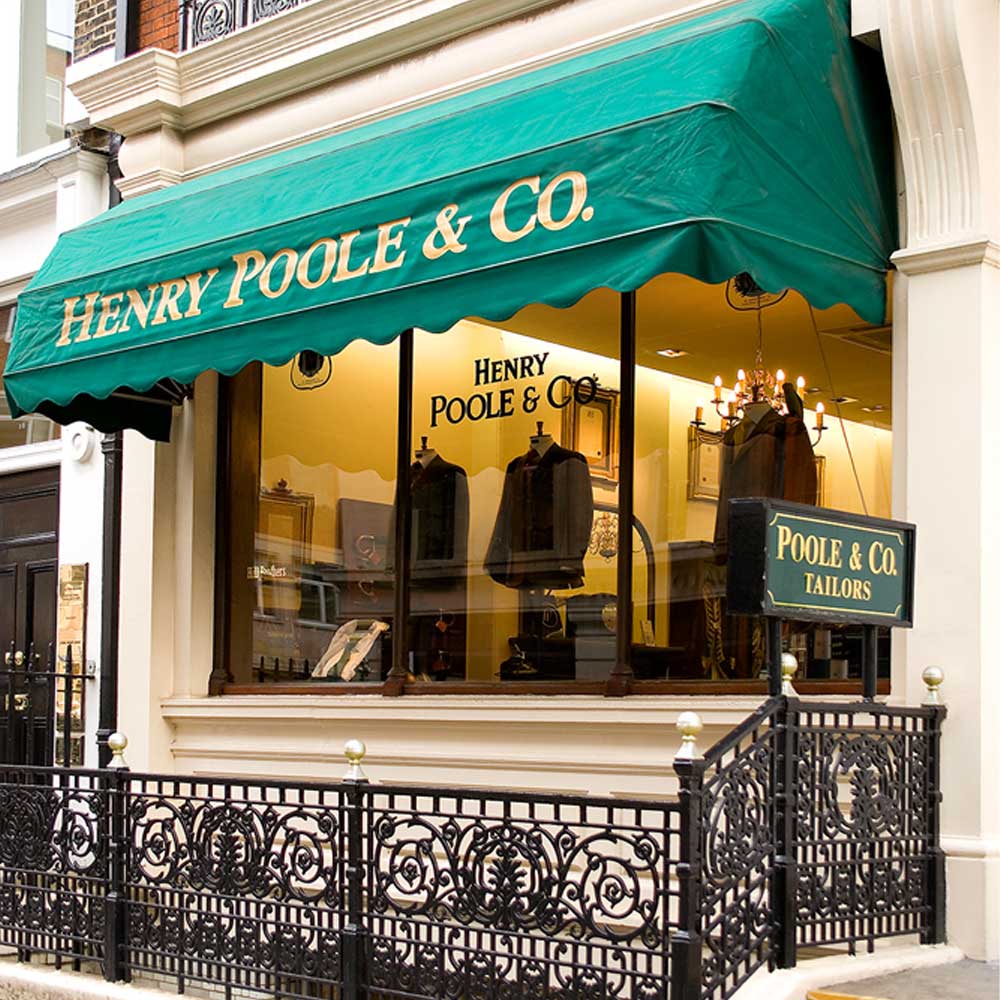
Often referred to as the ‘Founder of Savile Row’, Henry Poole & Co. has been a cornerstone of British tailoring since 1806.
The house’s claim to fame extends beyond its longevity; they are credited with creating the first dinner jacket (tuxedo) for the Prince of Wales in 1865.
Henry Poole’s house style epitomises the classic English cut: structured shoulders, a shaped waist, and a clean, elegant line.
Henry Poole & Co. is renowned for its attention to posture correction in its cuts, a subtle art that enhances the wearer’s bearing.
Gieves & Hawkes
The Military Maestros
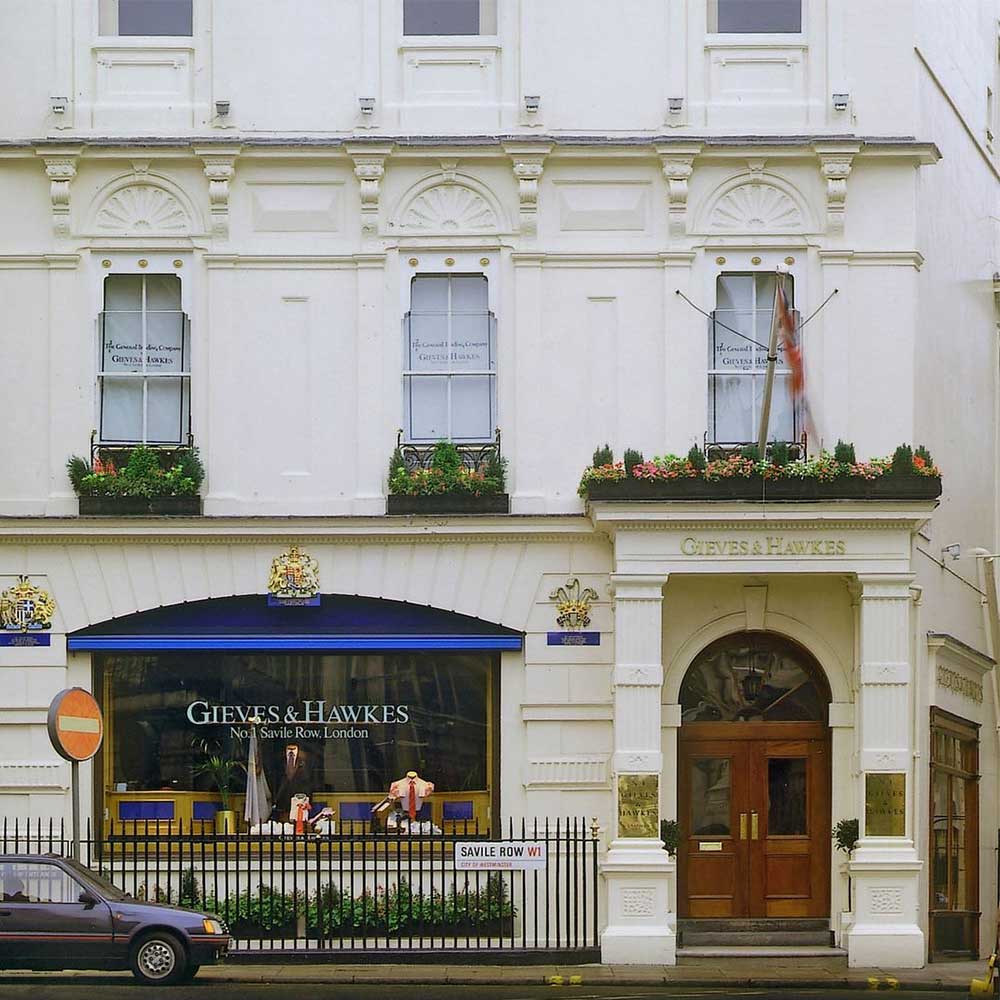
Occupying the prestigious No. 1 Savile Row, Gieves & Hawkes boasts a rich history dating back to 1771.
Formed by the merger of two royal warrant holders, this house is particularly known for its military tailoring.
The Gieves & Hawkes silhouette features strong, structured shoulders and a sculpted waist, reflecting its military heritage.
Their expertise extends to ceremonial uniforms, with the firm holding warrants from the British Royal Family.
Anderson & Sheppard
Drape Masters
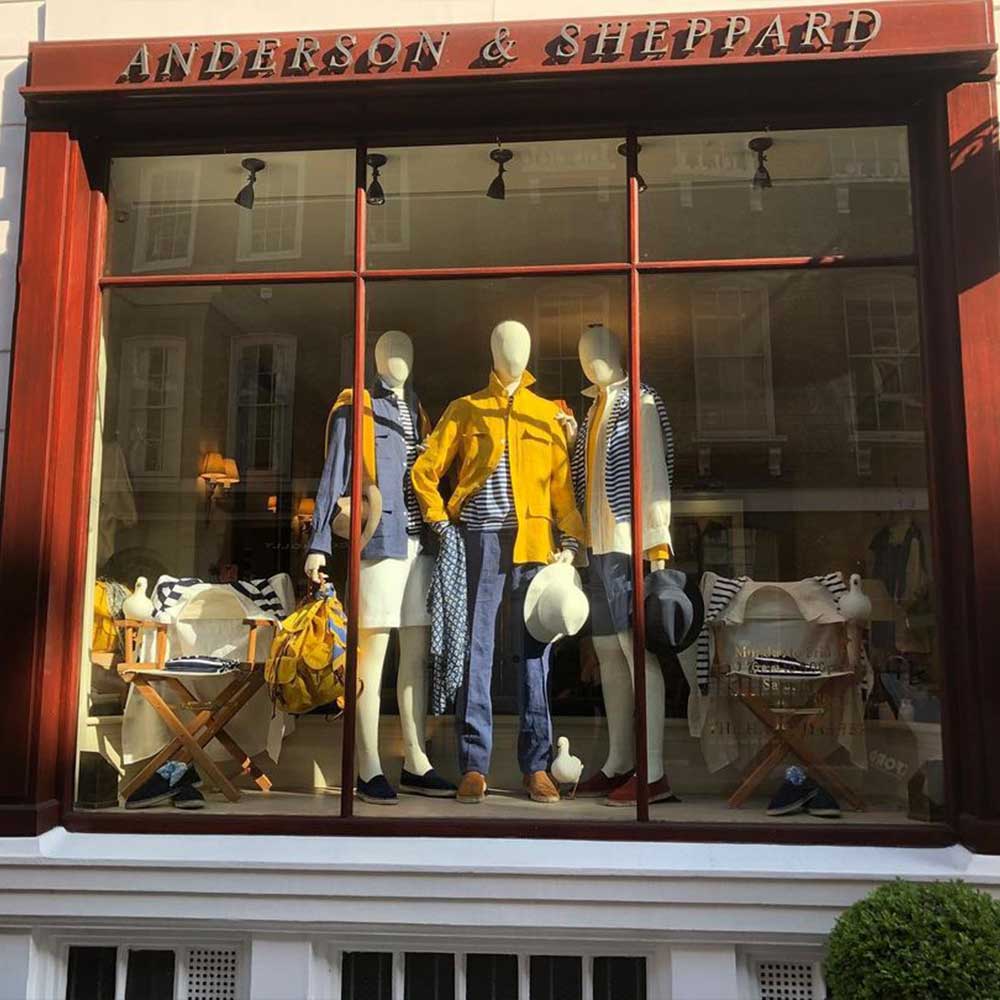
Founded in 1906, Anderson & Sheppard is renowned for its distinctive ‘English drape’ cut.
Developed by Frederick Scholte, this style features natural shoulders, a full chest, and a nipped waist, creating a silhouette that moves gracefully with the wearer.
Anderson & Sheppard’s softer construction has made it a favourite among Hollywood royalty, with Fred Astaire being one of its most famous devotees.
The house is known for its lighter canvassing and minimal padding, resulting in a jacket that feels almost weightless.
Interestingly, Anderson & Sheppard is one of the few Savile Row houses to have moved its premises off the Row itself, now located on nearby Old Burlington Street.
Huntsman
Equestrian Style Mastery
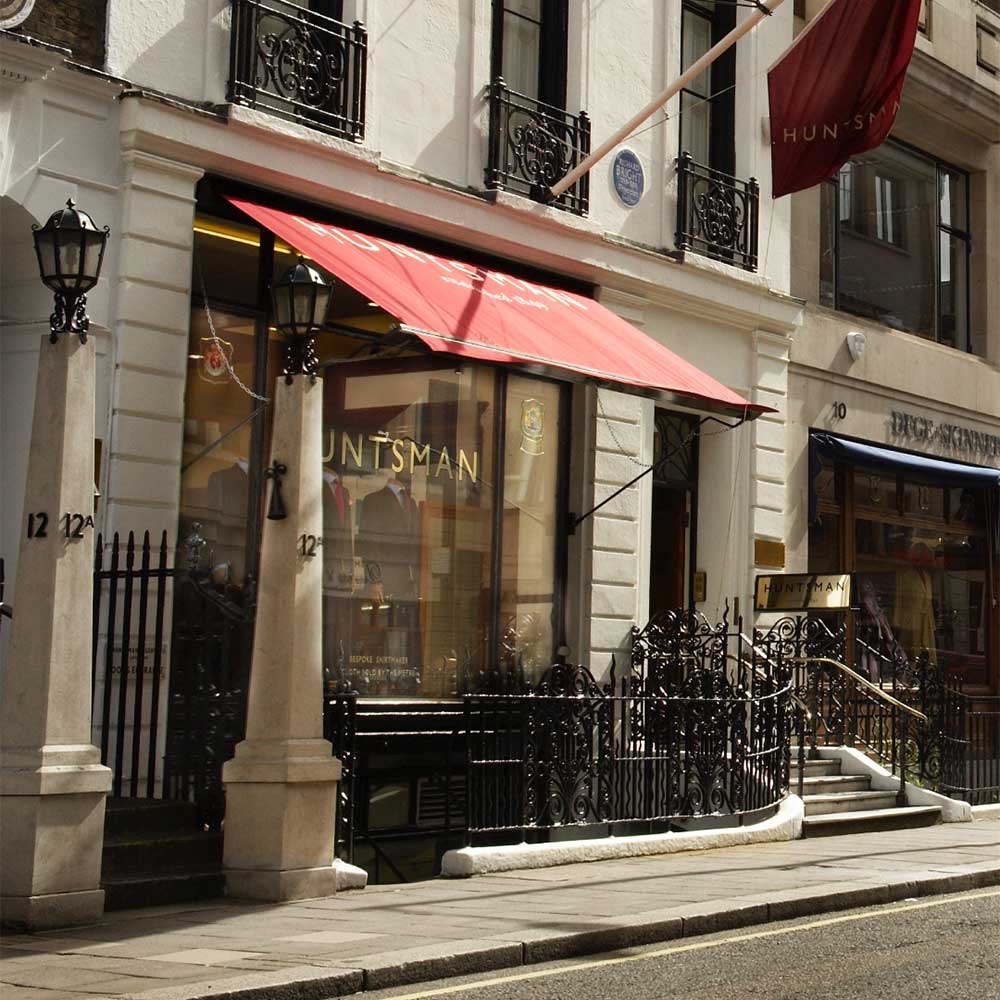
Established in 1849, Huntsman began as a sporting and riding clothes maker.
This heritage is reflected in their signature one-button jacket, which has a nipped waist and a slightly flared skirt reminiscent of riding coats.
Huntsman’s style is perhaps the most structured and formal on the Row.
Their jackets typically feature a higher armhole and a more pronounced shoulder, creating a powerful silhouette. This distinctive look has attracted a clientele ranging from royalty to Hollywood stars.
Dege & Skinner
The Family Tradition
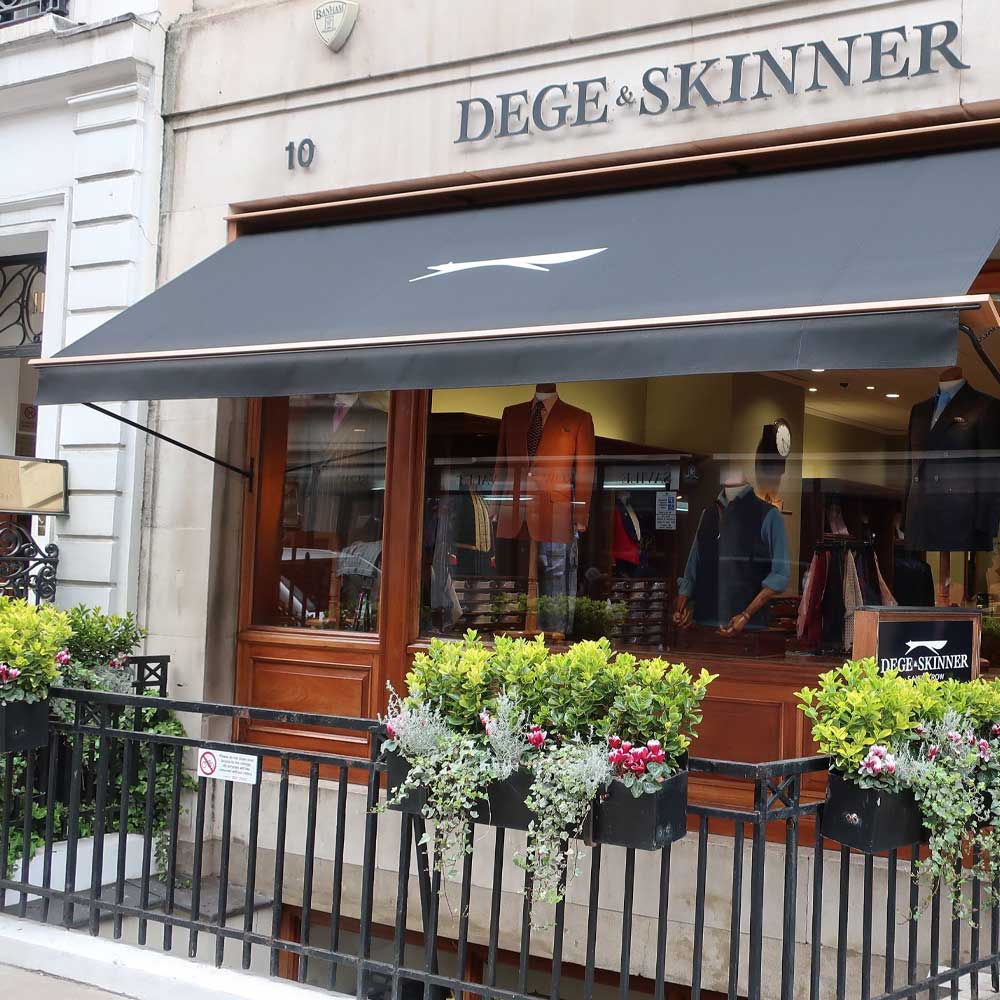
One of the few family-owned tailoring houses left on Savile Row, Dege & Skinner has operated since 1865.
They are particularly noted for their military uniforms, equestrian attire, and classic civilian attire.
Dege & Skinner’s house style is a quintessential English cut, with shapely shoulders and a defined waist.
They are among the few houses on the Row to offer bespoke shirt-making on the premises.
An intriguing aspect of Dege & Skinner is their ‘Dege fit’ – a proprietary system of measurement and cutting that ensures consistency across different cutters.
These storied establishments represent just a fraction of the talent concentrated on Savile Row.
Each tailoring house here, whether centuries old or relatively new, contributes to the rich tapestry of British tailoring.
Savile Row Bespoke Suit Cost
If you are considering investing in Savile Row tailoring, you must look beyond the initial price tag.
The value of a bespoke suit extends far beyond its cost, encompassing aspects of quality, longevity, personal expression, and a unique sartorial experience.
Let’s delve into the multifaceted value proposition of Savile Row bespoke.
| Aspect | Savile Row Bespoke | Off-the-Rack |
|---|---|---|
| Cost | £5,000 – £20,000+ | £500 – £2,000 |
| Lifespan | 20+ years with proper care | 3-5 years |
| Fit | Perfect, accounting for posture and asymmetry | Generic, based on average body types |
| Alterability | Highly alterable due to extra fabric allowances | Limited alteration potential |
| Exclusivity | One-of-a-kind garment | Mass-produced |
Understanding the Costs
A Savile Row bespoke suit typically starts at around £5,000 and can exceed £20,000 for the finest fabrics and most detailed work.
This price point often causes sticker shock for those accustomed to off-the-rack pricing. However, it’s crucial to understand what this investment entails.
The cost encompasses not just materials but also 60-80 hours of skilled labour, multiple fittings, and the accumulated expertise of centuries of tailoring tradition.
Each suit represents a collaboration between client and tailor, resulting in a truly one-of-a-kind garment.
Interestingly, when adjusted for inflation, the price of a Savile Row suit has remained relatively stable over the past century.
In 1920, a bespoke suit from a top Row tailor might cost around £30 – equivalent to about £4,000 today.
Longevity – Real Cost Over Time
While the initial outlay for a Savile Row suit is significant, its longevity provides exceptional value over time.
A well-cared-for bespoke suit can last 20-30 years or more, compared to 3-5 years for a typical off-the-rack suit, due to several factors:
Quality materials – Savile Row tailors use the finest cloths that hold up better to wear and clean.
Handcrafted – Hand-stitching allows for greater durability and easier repairs.
Full canvas – Full canvas construction allows the jacket to mould to the wearer’s body over time, improving rather than degrading with wear.
Extra fabric – Extra material allowances allow for alterations as the wearer’s body changes over the years.
Intangible Value – Craftsmanship and Heritage
Beyond the practical benefits, there’s an intangible value in owning a piece of Savile Row craftsmanship.
Each suit is a work of art, representing hundreds of years of tailoring heritage and the skills of master craftspeople.
Many clients develop a deep appreciation for the craft involved, with the commissioning process becoming a rewarding experience in itself.
Some even report forming lasting relationships with their tailors, returning year after year for new garments.
A Savile Row Suit as an Heirloom
Unlike disposable fast fashion, a Savile Row suit has the potential to become a family heirloom.
There are numerous stories of bespoke suits being passed down through generations, sometimes with the original tailor altering the garment for its new owner.
This potential for legacy adds another dimension to the value proposition, making a Savile Row suit not just a personal investment but a family one.
Comfort and Confidence – Priceless
Perhaps the most significant value of a Savile Row suit lies in its fit.
Unlike off-the-rack suits, designed for an ‘average’ body type, bespoke suits are crafted to address each client’s unique physique, posture, and asymmetries.
This perfect fit not only enhances comfort but also boosts confidence.
Many clients report feeling more assured and capable when wearing their bespoke suits, which can potentially influence performance in professional and social situations.
An interesting note is that a well-fitted suit can make the wearer appear fitter and more athletic.
Savile Row cutters are adept at creating visual illusions that flatter the wearer’s physique.
While the cost of a Savile Row suit is undeniably high, its value extends far beyond its price tag.
The investment begins to make sense when one considers the perfect fit, exceptional quality, longevity, versatility, and the intangible benefits of owning a piece of sartorial art.
Ultimately, the decision to invest in Savile Row tailoring is deeply personal.
For those who appreciate craftsmanship, seek the perfect fit, and value long-term quality over short-term savings, a Savile Row suit represents not just a purchase but an investment in oneself and a storied tradition of British tailoring excellence.
Savile Row Etiquette & Expectations
Stepping onto Savile Row for the first time can be an intimidating experience. The street’s rich history and reputation for excellence can make newcomers feel out of place.
However, understanding the etiquette and expectations of Savile Row will ensure a smooth and enjoyable bespoke experience. Here’s a comprehensive guide for the first-time client.
| Do | Don’t |
|---|---|
| Make an appointment in advance | Walk in expecting immediate service |
| Research the house styles beforehand | Expect all Savile Row tailors to be the same |
| Be open about your budget | Haggle over prices |
| Listen to your tailor’s advice | Insist on fashions unsuitable for bespoke tailoring |
| Allow ample time for fittings | Rush the process |
| Dress appropriately for fittings | Wear overly casual clothing to appointments |
| Ask questions about the process | Touch fabrics or garments without permission |
| Be clear about your needs and preferences | Be vague or indecisive about what you want |
Before Your Visit
Research is key before your first Savile Row appointment. Each house has its own unique style and specialities.
For instance, Huntsman is known for its structured silhouettes, while Anderson & Sheppard is famed for its soft, draping cut. Understanding these differences will help you choose the right tailor for your needs.
Always make an appointment. While some houses may accept walk-ins, scheduling ensures you’ll receive the full attention of a cutter or salesperson.
Most Savile Row establishments are open Monday to Friday, with some offering Saturday appointments by request.
Consider your budget carefully. Bespoke suits on Savile Row typically start around £5,000 and can go much higher.
Be prepared to discuss your budget openly as it will help the tailor guide you towards appropriate fabric choices and options.
Your First Savile Row Appointment
Dress appropriately for your visit. While you needn’t wear a suit, overly casual attire like shorts or flip-flops is frowned upon. Smart casual wear is generally acceptable.
Punctuality is crucial. Savile Row operates on tight schedules and late may reduce your appointment time. Aim to arrive a few minutes early to allow time to take in the atmosphere.
During your appointment, be clear about your needs. Are you looking for a business suit, a dinner jacket, or something for special occasions? The more specific you can be, the better your tailor can advise you.
The Consultation Process
Be prepared for an in-depth discussion about your lifestyle, preferences, and the garment’s intended use. Your tailor will use this information to guide fabric and style choices.
While it’s good to have ideas, remain open to your tailor’s suggestions. They have years of experience and understand what works best for different body types and occasions.
Don’t be afraid to ask questions. The bespoke process is complex, and good tailors are always happy to explain their craft. This is your opportunity to learn about the intricacies of bespoke tailoring.
Fittings
Bespoke tailoring requires multiple fittings – typically three or four. Be prepared to visit Savile Row several times over 8-12 weeks.
During fittings, wear appropriate undergarments and shoes similar to what you’ll wear with the finished garment. This helps the tailor achieve the best fit.
Be honest in your feedback during fittings. If something doesn’t feel right, speak up. The beauty of bespoke is that adjustments can be made at every stage.
Payment and Aftercare
Most Savile Row tailors require a deposit at the start of the process, with the balance due upon completion. Be prepared for this financial arrangement.
Once your garment is complete, your tailor will advise on proper care and maintenance.
Follow these instructions carefully to ensure the longevity of your investment.
Savile Row Faux Pas to Avoid
Never touch fabrics or garments without permission. The materials in a Savile Row establishment are expensive and delicate.
Avoid bringing large groups to appointments. The intimate spaces of most Savile Row shops are not conducive to crowds.
Don’t attempt to haggle over prices. The costs reflect the quality of materials and labour involved.
Refrain from asking tailors to copy designs from fashion brands or other tailors. Savile Row is about creating unique, personal garments.
Building a Relationship
Remember, commissioning a Savile Row suit is the beginning of a relationship. Many clients return to the same tailor for years, even decades.
Treat your tailor respectfully, and you’ll likely receive exceptional service for years.
An interesting tradition to note is that of the ‘house style’.
While tailors will accommodate your preferences, embracing the unique style of your chosen house often results in the best outcome. This is particularly true for first-time clients.
A Final Word
Entering the world of Savile Row bespoke tailoring is a step into a realm of unparalleled craftsmanship and personal service.
By understanding and respecting the traditions and etiquette of the Row, you ensure not just a superior garment but a rewarding and enlightening experience.
Remember, every Savile Row tailor wants you to look your best – by following these guidelines, you help them achieve that goal.
Conclusion
As we explore Savile Row to a close, it becomes evident that this small street in Mayfair represents far more than a mere collection of tailoring establishments.
It is a living, breathing embodiment of British sartorial excellence, a bastion of craftsmanship in an age of mass production, and a testament to the timeless appeal of bespoke clothing.
From its rich history from the late 18th century to its current position at the forefront of men’s tailoring, Savile Row has consistently defined and redefined what it means to be well-dressed.
The Row has clothed royalty, statesmen, and celebrities, yet its true magic lies in its ability to make every client feel like nobility.
The artistry of Savile Row tailoring is unparalleled. Each suit is a symphony of skilled hands working in concert – from the cutter’s precise measurements and the tailor’s deft stitching to the presser’s careful finishing.
This level of craftsmanship results in garments that not only fit perfectly but also stand the test of time, both in durability and style.
Yet, Savile Row is not merely a relic of the past. As we’ve seen, the street’s tailors have adeptly balanced tradition with innovation.
They’ve embraced new technologies and sustainable practices while maintaining the core principles that have defined Savile Row for generations.
This ability to evolve while staying true to its roots ensures that Savile Row remains relevant in the 21st century and beyond.
The investment in a Savile Row suit goes beyond the monetary. It is an investment in oneself, in tradition, and in a way of life that values quality over quantity.
In a world increasingly dominated by fast fashion, the slow, deliberate process of commissioning a bespoke suit offers a refreshing alternative – one that celebrates individuality, craftsmanship, and the luxury of time.
For the discerning gentleman, Savile Row offers more than just clothing. It offers an experience, a journey of self-discovery and personal style.
From the first consultation to the final fitting, each step in the bespoke process is an opportunity to refine one’s taste and develop a deeper appreciation for the art of tailoring.
As we look to the future, it’s clear that Savile Row will continue to face challenges. Changing fashion trends, economic pressures, and shifts in consumer behaviour all pose potential threats.
However, the Row’s ability to adapt while maintaining its core values suggests that it will not just survive but thrive in the years to come.
In conclusion, Savile Row is a beacon of excellence in men’s fashion. It represents the pinnacle of tailoring craft, the epitome of personal service, and the height of sartorial elegance.
Whether you’re a long-time aficionado or a curious newcomer, Savile Row offers an unparalleled sartorial journey that transforms not just how you dress but how you present yourself to the world.
In an age of uniformity, Savile Row reminds us of the power of individuality. In a time of disposable fashion, it stands for enduring quality.
And in a world that often values speed over substance, it champions the slow, deliberate pursuit of perfection.
Perhaps this is Savile Row’s true legacy—not just the suits it produces but also the values it embodies and the tradition of excellence it perpetuates.
As you consider your sartorial journey, remember that stepping onto Savile Row is more than just commissioning a suit – it’s becoming part of a storied tradition, a legacy of style that has shaped men’s fashion for centuries.
Whether you choose the structured silhouette of Huntsman, the drape cut of Anderson & Sheppard, or the military precision of Gieves & Hawkes, you’re not just wearing a suit – you’re wearing a piece of history crafted exclusively for you.
In the end, the allure of Savile Row lies not just in its impeccable suits, but in its promise of transformation.
For when you don a Savile Row suit, you don’t just look your best – you become the best version of yourself.
And in a world of constant change, that timeless confidence is perhaps the most valuable investment of all.
With over twenty years of front-row fashion and styling events, collabs with haute-couture houses, and a PhD in Luxury Fashion, Laurenti is an expert in crafting personalised looks that depict old-money sophistication.
With years of expertise in high-end fashion collabs and a PhD in Sustainable Fashion, Ru specialises in eco-luxe wardrobes for the modern gentleman seeking understated refinement.


